The Department of Health and Social Care has announced on Tuesday 31 August that the COVID-19 alert level has been reduced from 3 to 2.
In the statement, the Department of Health and Social Care has said: “Based on UKHSA advice, the UK Chief Medical Officers and NHS England National Medical Director have recommended to ministers the COVID alert level moves from level 3 to level 2.
“Hospitals and the wider health systems remain extremely busy overall but the summer BA.4 and BA.5 wave is subsiding and direct COVID severe illness is now a much smaller proportion of this. Severe COVID cases, direct COVID healthcare pressures, direct COVID deaths and ONS community positivity estimates have decreased.
“COVID remains present in the community and we may see an increase in cases with BA 4.6 and BA.2.75 circulating but do not expect this to lead to an immediate increase in hospital pressures. This will continue to be kept under review. Further COVID surges are likely so please be prepared by getting a vaccination when it is offered.”
The Government had published a joint report on 16 June to the House of Commons Health and Social Care Committee and Science and Technology Committee, ‘Coronavirus: lessons learned to date’.
 The Joint Inquiry investigated six main themes – the country’s preparedness for a pandemic; the use of non-pharmaceutical interventions such as border controls, social distancing and lockdowns to control the pandemic; the use of test, trace and isolate strategies; the impact of the pandemic on social care; the impact of the pandemic on specific communities; and the procurement and roll-out of COVID-19 vaccines.
The Joint Inquiry investigated six main themes – the country’s preparedness for a pandemic; the use of non-pharmaceutical interventions such as border controls, social distancing and lockdowns to control the pandemic; the use of test, trace and isolate strategies; the impact of the pandemic on social care; the impact of the pandemic on specific communities; and the procurement and roll-out of COVID-19 vaccines.
It is noted that this response does not fully take into account the government’s handling of the Omicron variant.
In summary, the report highlights:
- The government understands the need for longer term horizon scanning work across the whole of government to identify future risks relating to security and defence, science and technology, international and domestic issues. The Cabinet Office is in the process of reviewing the National Security Risk Assessment (NSRA) and the Government Office for Science (GOScience) is actively building futures capability across government, in support of the Integrated Review commitment to improve this, through shared evidence, tools and training
- Non-pharmaceutical interventions have been a key element of the government’s response to COVID-19 messaging from the government early in the pandemic was strong, effective, and undoubtedly contributed to the understanding of and compliance with the regulatory measures taken, including lockdown
- In respect of test, trace and isolate, the government will build on the legacy of the response to this pandemic. As the government has set out in the ‘Living with COVID19’ strategy, this includes ensuring that a resilient and scalable infrastructure is in place to protect the public from new and existing threats to health. It will involve working closely with local authorities to ensure they have the knowledge, experience, and capability to support future contact tracing arrangements and to draw down expert advice to deploy for greatest public health benefit; for example the capacity to respond to future public health emergencies
- The government recognises and has responded to the impact of the pandemic on the social care sector
- Recognising that those from an ethnic minority background have been disproportionately affected, the government has taken action to support these groups at each stage of its COVID-19 response.
The government has set out its ‘Living with COVID-19’ strategy. The government’s objective in the next phase of the COVID-19 response is to enable the country to manage COVID-19 like other respiratory illnesses, while minimising mortality and retaining the ability to respond if a new variant emerges with more dangerous properties than Omicron, or during periods of waning immunity, that could again threaten to place the NHS under unsustainable pressure.
The response report outlines the government’s consideration of each of the 38 recommendations made in the report.
Click here to view the ‘Coronavirus: lessons learned to date’ report.
PM Sets out plans for ‘living with COVID’
On Monday 21 February, Prime Minister Boris Johnson told the Commons that all COVID-19 restrictions will end in England from Thursday. All legal requirement to self-isolate, following a positive test, will come to an end and free mass lateral flow testing will also stop on 1 April.
From 1 April, he said the provision of free rapid testing would be targeted to certain sections of the population.
Vaccines will remain the first line of defence against COVID-19 as the Prime Minister sets out the Government’s plans to live with and manage the virus.
The ‘COVID-19 Response: Living with COVID-19‘ Plan sets out how vaccines and other pharmaceutical interventions will continue to form our first line of defence. Today the Government has accepted the JCVI recommendation to offer an additional booster to all adults aged over 75, all residents in care homes for older adults, and all over 12s who are immunosuppressed.
An autumn annual booster programme is under consideration, subject to further advice. Further detail on deployment on the spring booster programme will be set out in due course. The Government will continue to be guided by the JCVI on future vaccine programmes.
The plan covers four main pillars:
- Removing domestic restrictions while encouraging safer behaviours through public health advice, in common with longstanding ways of managing other infectious illnesses
- Protecting the vulnerable through pharmaceutical interventions and testing, in line with other viruses
- Maintaining resilience against future variants, including through ongoing surveillance, contingency planning and the ability to reintroduce key capabilities such as mass vaccination and testing in an emergency
- Securing innovations and opportunities from the COVID-19 response, including investment in life sciences
The public are encouraged to continue to follow public health advice, as with all infectious diseases such as the flu, to minimise the chance of catching COVID and help protect family and friends. This includes by letting fresh air in when meeting indoors, wearing a face covering in crowded and enclosed spaces where you come into contact with people you don’t normally meet, and washing your hands.
In summary, the changes, which apply to England, are:
From 21 February:
- the Government is removing the guidance for staff and students in most education and childcare settings to undertake twice weekly asymptomatic testing.
From 24 February, the Government will:
- remove the legal requirement to self-isolate following a positive test
- end the legal obligation for individuals to tell their employers when they are required to self-isolate
- no longer ask fully vaccinated close contacts and those under the age of 18 to test daily for 7 days, and remove the legal requirement for close contacts who are not fully vaccinated to self-isolate
- end routine contact tracing
- end self-isolation support payments and national funding for practical support. The medicine delivery service will no longer be available
- revoke The Health Protection (Coronavirus, Restrictions) (England) (No. 3) Regulations. Local authorities will continue to manage local outbreaks of COVID-19 in high-risk settings as they do with other infectious diseases.
From 24 March:
- the COVID-19 provisions within Statutory Sick Pay and Employment and Support Allowance regulations will end. People with COVID-19 may still be eligible, subject to the normal conditions of entitlement.
From 1 April:
- the health and safety requirement for every employer to explicitly consider COVID-19 in their risk assessments will be removed
- the Government will update guidance setting out the ongoing steps that people with COVID-19 should take to minimise contact with other people
- consolidate guidance to the public and businesses, in line with public health advice
- replace the existing set of ‘Working Safely’ guidance with new public health guidance.
- the Government will remove the current guidance on domestic voluntary COVID-status certification and will no longer recommend that certain venues use the NHS COVID Pass.
Businesses and organisations
From 24 February, workers will not be legally obliged to tell their employers when they are required to self-isolate. Employers and workers should follow Government guidance for those with COVID-19.
From 1 April, the Government will remove the health and safety requirement for every employer to explicitly consider COVID-19 in their risk assessments. The intention is to empower businesses to take responsibility for implementing mitigations that are appropriate for their circumstances. Employers that specifically work with COVID-19, such as laboratories, must continue to undertake a risk assessment that considers COVID-19.
From 1 April, the Government will replace the existing set of ‘Working Safely’ guidance with new public health guidance. Employers are advised to continue to consider the needs of employees at greater risk from COVID-19, including those whose immune system means they are at higher risk of serious illness from COVID-19. The Government will consult with employers and businesses to ensure guidance continues to support them to manage the risk of COVID-19 in workplaces.
Continuing to reduce the risk of COVID-19 transmission in workplaces
The HSE has issued this guidance. It highlights that, from 24 February, the UK government ended any remaining legal coronavirus restrictions in England. This includes removal of the requirement to self-isolate. There are different timescales for the removal of restrictions in Scotland and Wales.
Controlling risks in the workplace
Employers should continue to reduce the risk of COVID-19 transmission in line with risk assessments. The following workplace controls remain:
- adequate ventilation
- sufficient cleaning
- good hand hygiene.
Consultation with the workforce must continue on matters relating to health and safety, talking to workers and their representatives to help to reduce risk.
UK government guidance on working safely provides further information and advice covering a range of different types of work.
Measures identified by the risk assessment must take account of the public health regulations and guidance for the nation you are working in.
Guidance from public health bodies and other government departments covering matters that are not enforced by HSE include:
- vaccinations
- face coverings
- workplace testing
- testing and contact tracing.
The guidance includes links to sources of further information for these areas.
Ventilation
The Government will continue to promote and support good ventilation. Employers and businesses should continue identifying poorly ventilated spaces and take steps to improve fresh air flow.
There is increasing evidence of the importance of circulating fresh air in reducing the risk of COVID-19 transmission. Ventilation also helps with reducing transmission of other respiratory infections such as influenza, with some research showing that being in a room with fresh air can in some cases reduce the risk of airborne transmission of COVID-19 by over 70%.
Calls grow for free or low-cost COVID tests to keep staff safe
The British Chambers of Commerce (BCC) has called for all companies to be given free or cheap lateral flow tests, BBC News has reported.
The government said it recognised the impact of rising costs and had given firms £400 billion in COVID support.
COVID-19 advice for the railway industry and passengers
(Updated 19 April)
The Office of Rail and Road as updated this guidance in accordance with the latest advice from governments. It notes that COVID-19 remains a public health risk. In England, Scotland and Wales current government guidance and advice reflects the move to an approach of managing and living with coronavirus.
On 1 April 2022, the Government introduced new COVID-19 advice for England. This replaced previous Government guidance and followed the removal of the last remaining domestic restrictions in England on 24 February 2022.
ORR has removed its previous COVID-19 guidance and refers stakeholders to the latest government advice for each country.
Face coverings

Whilst there is no longer a legal requirement to wear a face covering on public transport, the rail industry is continuing to encourage passengers and employees to wear face coverings when on trains and in busy stations to promote a safe travel environment.
Important points of consideration for dutyholders and employers:
- COVID-19 remains a public health issue. When considering it as a risk in the workplace duty holders and employers should manage it in accordance with public health advice.
- Employers no longer need to explicitly consider COVID-19 in risk assessments, although they may still choose to do so. The exception is where employers directly work with COVID-19 (e.g., laboratories researching the virus and health care workers caring for people infected with COVID-19). In these cases, employers have a duty to protect their employees under COSHH and must continue to consider COVID-19 in their risk assessments – more information on this can be found on the HSE website.
- Employers must continue to comply with the Workplace (Health, Safety and Welfare) Regulations 1992 and Construction Design and Management Regulations 2015 in managing health and safety risks in the workplace.
- Where working practices have changed permanently as a result of the pandemic, they should be to at least the same standard as those used prior to the pandemic and should not be to the detriment of health and safety.
- Controls and processes introduced to mitigate COVID-19 transmission may also have wider benefits – e.g., enhanced cleaning, ventilation/air filtration etc. Employers should consider these as part of their risk assessment and working practices going forwards.
- Stakeholder collaboration facilitated the introduction of COVID-19 risk controls in the rail industry.
- The industry is encouraged to continue working together to mitigate wider risks and hazards.
- The rail industry is encouraged to continue exploring solutions that can further reduce risks and hazards associated, especially those associated with infectious and airborne diseases.
In Scotland
[Updated 1 May]
Click here for the latest on Coronavirus in Scotland.
‘Stay at home’ guidance published
From Sunday 1 May public health advice in Scotland changed to a ‘stay at home’ message replacing self-isolation for people who have symptoms or have tested positive for COVID-19.
People who have symptoms of COVID-19 and who have a fever or are too unwell to carry out normal activities will be asked to ‘stay at home’ while they are unwell or have a fever. They will no longer be advised to take a PCR test.
The changes, part of the Test and Protect Transition Plan which was published in March, will also see all contact tracing ending.
As previously announced, testing for the general population will end on 30 April with test sites closing at that point too. However, testing will remain available to certain groups in order to protect high risk settings, support clinical care and for surveillance purposes.
Those groups include health and social care workers, care home and hospital visitors, patients groups eligible for treatment, hospital patients, unpaid carers and people in prison.
Other adults who have symptoms of COVID-19 and other respiratory illnesses and have a high temperature or do not feel well enough to go to work or carry out normal activities, are advised to stay at home until their fever has gone or they feel well enough.
Children and young people aged 18 and under with mild symptoms such as a runny nose, sore throat, or slight cough, who are otherwise well, do not need to stay at home and can continue to attend education settings.
They should only stay at home if they are unwell and have a high temperature. They can go back to school, college or childcare, and resume normal activities when they no longer have a fever and they feel well enough to attend.
This guidance reflects the fact that children and young people generally have a higher likelihood than adults of regular instances of respiratory symptoms from non-COVID illnesses.
The Protect Scotland app will also be closed down shortly, but users are encouraged to keep the app on their phones in case it is needed again at a future date.
NHS Scotland will also be taken out of emergency footing at the end of Saturday 30 April as COVID-19 cases continue to fall.
However, it is stressed that with continued demands on services across health and social care, there remains a need for caution to protect vital services. Patients are advised to only attend A&E if their condition is an emergency, to continue to limit the pressure on services.
More information is available here.
Coronavirus (COVID-19): Safer Workplaces and Public Settings
This guidance from the Scottish Government has been updated to reflect latest information. The guidance is for businesses and workplaces on reducing the risk of COVID-19 and supporting staff and customers.
On 18 April, the guide was restructured and renamed to take account of latest guidance. It was previously titled “safer businesses and workplaces.” It now includes new sections on ventilation and fair work.
Ventilation
The provision of fresh air into indoor environments is essential to preventing the spread of COVID-19. Further to this, employers must, by law, ensure an adequate supply of fresh air in the workplace.
To improve the supply of fresh air in your workplace and reduce the spread of COVID-19:
- Regularly monitor the air quality within enclosed environments – you may wish to use Non Dispersive Infra-Red (NDIR) CO2 monitors to identify the CO2 levels to help decide if ventilation is poor. For further information, please see the Health and Safety Executive (HSE) guidance.
- Let in as much fresh air as possible – open windows, doors (excluding fire doors), and vents.
- Avoid using ventilation systems which only recycle used air. Make sure that fresh air is introduced to all spaces.
- Be aware of the relevant occupancy level – more people together means more aerosol particles, and needs more ventilation.
- Air rooms between users or regularly throughout the day.
- Where practical, spaces where there is potential for long duration exposure over several hours within the same group (eg offices) should ensure occupants have regular breaks, ideally with purge ventilation/airing of the room, to reduce the potential for viral exposure.
- If ventilation makes it feel cold – consider relaxing uniform or dress code requirements, so employees can continue to work comfortably.
- Understand your building’s ventilation system – do not adjust mechanical settings without expert advice. It is important to make sure that ventilation systems and/or extractor fans are used correctly.
Fair work
Adopt Fair Work practices and a flexible approach to dealing with the impacts of COVID-19, in order to protect the health and wellbeing of your workforce. Central to the Fair Work approach is the expectation that employers, trades unions and workers work together to ensure workers are treated fairly and their concerns are taken seriously.
Employers are encouraged to consult closely with employees (and trade unions where appropriate and applicable) and encourage them to raise questions or points of concern.
The full guidance for safer workplaces is available here.
Changes from 21 March 2022:
Legal requirements to wear face coverings on public transport and most indoor public settings will continue until at least early April given the current spike in COVID case numbers, Scotland’s First Minister Nicola Sturgeon has announced.
Remaining legal requirements for businesses and service providers to collect customer details for contact tracing, and to have regard to and take reasonable measures set out in COVID guidance, will end as planned on Monday 21 March.
The First Minister also confirmed that people without COVID-19 symptoms will no longer be asked to take regular lateral flow tests from 18 April. The change forms part of the Test and Protect Transition Plan, which sets out how testing will become more targeted, with the aim of reducing serious harm from COVID-19.
The changes to Test and Protect mean that from 18 April:
- Most people without symptoms will no longer be asked to take COVID-19 tests.
- Free lateral flow devices (LFDs) for the purposes of twice weekly routine testing will no longer be available for the general population given the changing advice, but will continue to be free for any purpose for which testing continues to be advised – for clinical care, for health and social care workers and for people visiting vulnerable individuals in care homes or hospitals.
- Until the end of April, people with symptoms should still isolate and get a PCR test.
- Vaccinated close contacts of someone with COVID-19 should continue to test daily for seven days with LFDs.
People who have symptoms of COVID-19 will still be able to book PCR tests in the usual way until 30 April. From that date, test sites will close and people with symptoms will no longer be advised that they need to seek a test. The public health advice for people who feel unwell will be to stay at home until they feel better, to reduce the risk of infecting other people.
The First Minister thanked the frontline Test and Protect workforce for their efforts throughout the pandemic. Work is on-going to support staff to explore other opportunities in the public and private sector.
Stressing the importance of guidance and advice instead of legal restrictions, Scotland’s First Minister said: “Given current case numbers, and the desirability of getting those back under control quickly, the wearing of face masks will stay in place for at least another two weeks.
“Changes in Test and Protect will be phased between now and the end of April. After Easter – from 18 April – we will stop recommending that people who don’t have symptoms, should test for COVID.
“This change will apply across the population – including in most workplaces and in early years centres, schools, universities and colleges.
“Then, at the end of April, routine testing will end – even for people who have symptoms.
“At that time, physical test sites will close – although some mobile testing units and capacity will be retained for possible future use. Contact tracing will also end.
“Free testing will not generally be available to the wider population. Instead, our advice will be that if you have symptoms of COVID – or indeed symptoms of the flu, or any other infectious illness – you should stay at home in order to aid your recovery.”
To help protect yourself and others:
- get the vaccine or the vaccine booster
- take regular lateral flow tests – especially before mixing with other people or visiting a hospital or care home – get lateral flow tests
- follow the guidance on self-isolating and booking a test
- wear a face covering where required
- if mixing with others, try to gather in small groups only
- wash your hands regularly and cover your nose and mouth if coughing or sneezing
- open windows when meeting indoors
- a mixture of home and office working is allowed
- use the apps: COVID status, Protect Scotland and Check-in Scotland
Coronavirus (COVID-19): offices guidance – updated
This guidance, issued by the Scottish Government, aims to support employers and employees for safer office working, including hybrid working arrangements. It has been updated to reflect the current situation in Scotland.
The Scottish Government encourages employers to consider the implementation of a hybrid approach to working – with workers spending some time in the office and some time at home where that can be done safely. It is recognised that homeworking still remains one of the most effective protections against the virus and for maintaining business resilience.
In line with good practice, employers should work with their employees to consider hybrid and flexible working models to help avoid a wholesale return to offices at this time.
Principles that should be implemented in a phased return to offices are suggested as follows:
- the health and safety of employees, customers and service users remains a priority for businesses
- we encourage businesses to work with employees and (where applicable and appropriate) trade unions to consider flexible and hybrid working arrangements in their own contexts
- a phased and co-ordinated approach should be considered to support the introduction or reintroduction of hybrid and flexible working to support employee wellbeing and economic recovery
- a wide variety of models of working should continue to be promoted where appropriate with businesses considering the unique situation for their staff eg hybrid models of office based and home working
(COVID-19): safer businesses and workplaces
(Scotland)
This guidance is for businesses and workplaces on reducing the risk of COVID-19 and supporting staff and customers.
As of 21 March 2022, most of the remaining legal requirements in the Coronavirus regulations will be removed, specifically the:
- Requirement to collect and share visitor information.
- Requirement to have regard to Scottish Government guidance about minimising risk of exposure to coronavirus on its premises.
- Requirement to take reasonably practicable measures, as set out in the guidance, to minimise incidence and spread of Coronavirus.
It remains a legal requirement to continue to wear a face covering in most indoor public spaces, unless exempt from doing so because of specific circumstances. This will be reviewed on 29 March 2022 and any changes implemented from 4 April 2022.
COVID still remains a concern for public health and therefore workplaces are encouraged to continue with all protective measures identified by risk assessment, make adaptations to operations and maintain a vigilant approach to managing COVID-19.
Managing transmission risk
A new section has been added to the guidance about managing transmission risk. In terms of the workplace, it is suggested:
- Encourage staff and customers to wear face coverings in enclosed, busy areas, pinch-points or places which are less well ventilated. Face coverings remain in regulation with exemptions.
- Maximise ventilation and the use of outside space if possible.
- Reinforce enhanced cleaning, particularly of frequently touched surfaces, and hygiene measures such as providing alcohol based hand sanitiser.
- Minimise congested areas in your premises such as narrow corridors, staircases, doorways, till points and storage areas and reviewing use of shared areas such as changing rooms etc. to reduce people using them at the same time.
- Consider using space and barriers to reduce transmission like screens and partitions and allowing more space between people in the workplace.
- Ensure robust outbreak management plans for the workplace.
- Support the distance aware scheme.
- Encourage staff to travel safely when going to and from the workplace. You should not travel to work or car share if you have symptoms of Coronavirus.
- Vehicle sharing at work involves close contact with other individuals therefore, you should wear face coverings, ensure vehicles are well ventilated by opening windows and clean after each journey.
The full guidance is available here.
In Wales
[Updated 18 April]
Click here for the latest coronavirus guidelines in Wales.
Public Health Advice for Employers, Businesses and Organisations: Coronavirus
This public health advice applies to Wales and is aimed at all businesses, employers and event organisers. Whist this advice does cover public health control measures that could be implemented to reduce the risk of transmission, it is not explicitly Coronavirus specific. It is intended to be used as a guide for safely mitigating against the most common communicable diseases (including flu, norovirus and coronavirus) risks.
It remains important for businesses, employers and event organisers to consider what they can do to reduce the spread of the virus, and protect their workers and customers, including any additional protections for those who are more vulnerable, including the immunosuppressed or those who live with someone who is vulnerable. By continuing to implement public health control measures, businesses, employers and event organisers will help keep the spread of the virus low, improve consumer confidence and minimise the potential of further disruption.
This public health advice does not replace business and employer statutory responsibilities and it is important you continue to comply with your legal obligations relating to Health and Safety at Work etc Act 1974, Workplace (Health, Safety and Welfare) Regulations 1992, Construction (Design and Management) Regulations 2015, Equality Act 2010 and any other employment regulations.
This advice covers public health control measures (previously referred to as “reasonable measures”) which have been effective in mitigating risks during the pandemic.
This includes:
- sufficient ventilation
- robust cleaning and personal hygiene practices
- regular training
- physical distancing
- enabling working from home
- exclusion of symptomatic individuals and those who have tested positive for coronavirus
- supporting vaccine take up.
Alert level 0: guidance for employers, businesses and organisations
This document, which sets out information for businesses, employers, organisations, activity and events organisers in Wales must do at alert level 0, has been updated. It applies to Wales only.
From the 18 February there is no longer a legal requirement for individuals to prove their vaccination status or to provide proof of a recent negative lateral flow test or medical exemption to gain entry to certain events and venues in Wales. However, businesses and settings can still consider requiring the use of the COVID pass or proof of a negative test as part of the reasonable measures to minimise the risk of coronavirus.
From 28 March, face coverings are only mandatory (unless a person is exempt) in health and social care settings, see our detailed face coverings guidance for full details. Voluntary wearing of face coverings is strongly advised in other indoor public settings.
Businesses, employers and other organisations have a duty to protect their employees and customers while on their premises. While there are some important steps that can be taken to help the community, businesses, employers and other organisations, including activity and event organisers, must undertake a bespoke coronavirus risk assessment of their premises and activities and take reasonable measures to minimise exposure to, and the spread of, coronavirus based on that bespoke risk assessment.
Other legal requirements that remain in place are as follows:
- businesses, employers and other organisations must continue to undertake a specific coronavirus risk assessment and take reasonable measures to minimise exposure to, and the spread of, coronavirus
- adults and children over 11 must continue to wear face-coverings in health and social care settings. See our detailed face coverings guidance for full details. Although no longer a legal requirement in other settings, the use of face coverings is still strongly advised, unless people previously had a medical exemption.
Wales’ Long-term COVID-19 Transition from Pandemic to Endemic
This document sets out how Wales can live safely with coronavirus and what that will mean for public health services and protections put in place to respond to the pandemic, including testing services.
Was will remain at alert level 0 for the next three weeks with the current level of protections in place. But all legal measures could be removed from 28 March if the public health situation remains stable.
The document sets out a gradual transition away from emergency measures, based on evidence and with the protection of everyone, especially the most vulnerable, at its heart.
The plan sets out how Wales’ response to coronavirus will change under the two core planning scenarios – COVID Stable and COVID Urgent.
COVID Stable is the most likely scenario – with Wales expected to encounter new waves of infection, but they are not expected to put unsustainable pressure on the NHS thanks to the effectiveness of vaccines and other pharmaceutical treatments, such as new COVID-19 antivirals.
The plan sets out a gradual, phased approach towards the long-term management of the virus under COVID Stable, including:
- Supporting people to maintain behaviours that have become familiar to help reduce the transmission of all respiratory infections, not just Coronavirus.
- Vaccination boosters in spring for the elderly and most vulnerable adults, and a regular COVID-19 vaccination programme from the autumn.
- Test, Trace, Protect programme gradually moves away from universal and routine symptomatic and asymptomatic testing and the requirement to self-isolate, to a more targeted approach aimed at vulnerable people.
- Adaptation of public services, including, for example, using local risk assessments and outbreak control plans.
- Businesses and other employers to build on the elements of infection control they have put in place to protect staff and customers.
Contingency planning is also underway to enable the Welsh Government and other public services to quickly respond to a COVID-Urgent scenario – such as a new variant which evades the vaccine – if necessary.
The next 3-weekly review of the coronavirus regulations will be carried out by 24 March, when the remaining legal measures at alert level 0 will be reviewed.
The guidance can be found here.
In Ireland
[Updated 22 January]
Long COVID – Advice for employers and employees
For some people, coronavirus can cause symptoms that last weeks or months after the infection. This can be called ‘post-COVID-19 syndrome’, ‘long-tail COVID’ or ‘long COVID’.
Long COVID symptoms could affect someone’s ability to work or cause them to take sickness absence.
ACAS has issued guidance about the issue, which points out that the usual rules for sickness absence and sick pay apply when someone is off work because of long COVID.
Read the latest NHS advice on long-COVID, here.
Employers
It advises that employers should be aware that the effects of long COVID can come and go. On some days the person might seem well, but on others their symptoms can be worse and they might need to be off work again.
If someone is off sick, they might feel isolated or need support to return to work. Employers should:
- Agree how and when to make contact during any absence.
- Make sure their work is covered and shared out appropriately while they’re off.
- Talk about ways to support them as they return to work where and when possible.
It may be necessary for an employer to make a reasonable adjustment to the workplace or to how an employee works, such as different working hours, in order to facilitate a return to work. The guidance includes an example of what a reasonable adjustment could look like.
The document also includes advice on how to address a situation where an employee is struggling to do their job. For example, a further occupational health assessment to find out if more support may be needed.
Workers and managers
Long COVID guidance has also been set out for workers and managers, by the European Agency for Safety and Health at Work (EU-OSHA).
The guidance sets out the following key steps when supporting a returning worker:
- Step 1: stay in touch while the worker is absent from work.
- Step 2: prepare for the worker’s return.
- Step 3: have a return-to-work conversation.
- Step 4: provide support during the early days after return to work.
- Step 5: provide ongoing support and review regularly.
Coronavirus restrictions: How to stay safe and help prevent the spread
This government document has been updated following the Prime Minister’s statement on the autumn and winter plan, on September 14.
It stresses that it is still possible to catch and spread COVID-19, even if you are fully vaccinated. COVID-19 will be a feature of our lives for the foreseeable future, so we need to learn to live with it and manage the risk to ourselves and others.
It suggests that everyone can play their part by understanding the situations where risks of COVID-19 infection and transmission are likely to be higher and taking action to reduce these risks.
Following this guidance aims to help the reader understand situations where there is a greater risk of catching or spreading COVID-19 and the steps that can be taken to stay safe and protect others.
Businesses are advised to follow the principles set out in the working safely guidance. Employers still have a legal duty to manage risks to those affected by their business. The way to do this is to carry out a health and safety risk assessment, including the risk of COVID-19, and to take reasonable steps to mitigate the risks you identify. The working safely guidance sets out a range of mitigations employers should consider including:
- Identifying poorly ventilated areas in the venue, for example by using a CO2 monitor, and taking steps to improve air flow in these areas.
- Ensuring that staff and customers who are unwell do not attend the workplace or venue.
- Providing hand sanitiser to enable staff and customers to clean their hands more frequently, and cleaning surfaces that people touch regularly.
- Communicating to staff and customers the measures you have put in place.
Businesses are also encouraged to continue displaying NHS QR codes for attendees wishing to check in using the NHS COVID-19 app so they are alerted if there’s an outbreak and can take action to protect others, however this is no longer a legal requirement.
You can find the latest How to stay safe and help prevent the spread, here.
COVID-19 workplace advice
All businesses are advised to follow the principles set out in the government’s working safely guidance. Whilst the government is no longer instructing people to work from home if they can, the government would expect and recommend a gradual return over the summer.
Employers still have a legal duty to manage risks to those affected by their business. The way to do this is to carry out a health and safety risk assessment, including the risk of COVID-19, and to take reasonable steps to mitigate the risks you identify. The working safely guidance sets out a range of mitigations employers should consider including:
- Cleaning surfaces that people touch regularly.
- Identifying poorly ventilated areas in the venue and taking steps to improve air flow.
- Ensuring that staff and customers who are unwell do not attend the workplace or venue.
- Communicating to staff and customers the measures you have put in place.
Businesses are also encouraged to continue displaying QR codes for customers wishing to check in using the NHS COVID-19 app, or to continue collecting customer contact details to support NHS Test and Trace, however this will no longer be a legal requirement.
Vaccination of workers in social care settings other than care homes: operational guidance
From 1 April 2022, people carrying out face-to-face, CQC-regulated social care activities will need to be fully vaccinated against COVID-19, unless exempt.
This guidance supports the implementation of the Health and Social Care Act 2008 (Regulated Activities) (Amendment) (Coronavirus) (No. 2) Regulations 2022 (‘the regulations’), in wider social care settings, including home care, extra care housing and supported living.
The guidance does not cover care homes. There is separate guidance on implementing these regulations in care homes.
From 1 April 2022, social care providers registered with the Care Quality Commission (CQC) must ensure that anyone they employ or engage to carry out direct and face-to-face CQC-regulated social care activities meets the vaccination requirements as set out in this guidance. The person must be able to prove that they meet one of the following:
- satisfy the vaccination requirements
- are exempt from vaccination
- are covered by other exceptions.
This guidance is aimed at:
- service providers
- CQC registered persons
- local authorities
- people who are employed or otherwise engaged to carry out CQC-regulated social care activity in settings other than care homes
- people who receive care and support services in these settings.
CIPD Managing Health and Safety Considerations
This guide has been written by IOSH and outlines what you need to know to sustain safe and healthy workplaces as we continue to manage the effects of COVID-19.
Businesses should always put employees’ health and safety at the centre of their return-to-workplace processes. Where staff are required to be on site, IOSH have set out the following four key areas employers should address:
- safe people
- safe workplaces
- safe equipment
- safe systems.
If an employer fails to take reasonable care in any of these areas, an employee may be able to make a number of claims, including resigning and claiming constructive unfair dismissal and personal injury. If an employer breaches a duty (such as the requirement to provide insurance) it is a criminal offence.
Employers are also expected to comply with health and safety legal requirements. Under the Health and Safety at Work Act (1974), all employers with over five employees must have a written health and safety policy. In cases of non-compliance, enforcement officers can issue improvement or prohibition notices, which can lead to criminal penalties including large fines and imprisonment. Employers with less than five employees may still find it useful to document their health and safety procedure.
This guide outlines health and safety considerations and measures for employers as they continue to manage the effects of the COVID-19 pandemic. It also suggests how HR, occupational safety and health (OSH) and other functions can work together to achieve this.
COVID-19 vaccination programme
COVID-19 Vaccination: Guide for Employers
Public Health England has published by information for employers about the COVID-19 vaccination programme.
It stresses the importance of supporting the vaccination of employees against COVID-19, adding that employers are in a unique position to support the COVID-19 vaccination programme by encouraging staff to get both their first jab and then, when they are eligible, their second jab, to ensure they have maximum protection.
Benefits of COVID-19 vaccination include the following:
- Employees can better protect themselves and those around them.
- Lower risk of employees catching and spreading COVID-19 to colleagues, therefore reducing the negative impact on the workforce.
- Protecting customers.
- Bringing staff back safely into the workplace sooner.
In terms of supporting the vaccination of their workforce, employers urged to encourage their employees to get vaccinated. Organisations can play a vital role in helping to promote vaccination as part of their responsibility to help reduce workplace risk. Promoting vaccination within the workforce can include:
- Sharing information on the facts around vaccination.
- Showing support for vaccination from senior leadership.
- Engaging expert and community leaders.
- Being open with employees about what support a business will provide to facilitate workforce vaccination.
- Sharing experience.
CIPD Vaccination Guide for Employers
Given that, for public health reasons and to protect themselves and others from disease, it’s desirable to have as many people vaccinated against COVID-19 as possible, the CIPD advise that employers should encourage staff to be vaccinated and publicise the benefits to improve take up of the vaccine and boosters when individuals are offered these through the NHS.
In addition to vaccination, the CIPD stress that employers should undertake coronavirus specific risk management assessments and consider measures such as continued home working and workplace measures such as ventilation, handwashing, social distancing and the use of PPE even though most legal restrictions have come to an end. Employers should stay up to date with the latest plans and advice on the UK government website, covering all UK countries, and adjust their plans accordingly.
As COVID-19 vaccination and boosters extend throughout the UK, employers must incorporate plans on the implications for their staff, visitors and workplace as a whole, covering. Employers will also need to consider their contractual terms, disciplinary, grievance and dismissal policies.
This guidance sets out the key points for employers to consider, which are:
- encouraging vaccination
- adopting a vaccination policy
- risk assessments
- planning for different groups of employees
- making vaccination mandatory
- other factors, such as testing, establishing if employees have had the vaccination, recruitment, data protection, etc.
In the situation where social mixing and social contact return towards pre-pandemic norms, it is expected that winter 2021 to 2022 will be the first winter in the UK when SARS-CoV2 will co-circulate alongside other respiratory viruses, including seasonal influenza virus. Seasonal influenza and SARS-CoV-2 viruses have the potential to add substantially to the ‘winter pressures’ usually faced by the NHS, particularly if infection waves from both viruses coincide. The timing and magnitude of potential influenza and SARS-CoV2 infection waves for winter 2021 to 2022 are currently unknown.
In the view of the Joint Committee on Vaccination and Immunisation (JCVI), the primary objective of a 2021 COVID-19 booster programme is to reduce the occurrence of serious COVID-19 disease.
It is stressed that the precautionary advice within this document is interim and may be subject to substantial change before being finalised.
A potential booster programme should begin in September 2021, it says, in order to maximise protection in those who are most vulnerable to serious COVID-19 ahead of the winter months.
Any potential COVID-19 booster programme should be offered in 2 stages:
Stage 1. The following persons should be offered a third dose COVID-19 booster vaccine and the annual influenza vaccine as soon as possible from September 2021:
- Adults aged 16 years and over who are immunosuppressed.
- Those living in residential care homes for older adults.
- All adults aged 70 years or over.
- Adults aged 16 years and over who are considered clinically extremely vulnerable.
- Frontline health and social care workers.
Stage 2. The following persons should be offered a third dose COVID-19 booster vaccine as soon as practicable after stage 1, with equal emphasis on deployment of the influenza vaccine where eligible:
- All adults aged 50 years and over.
- Adults aged 16 to 49 years who are in an influenza or COVID-19 at-risk group.
- Adult household contacts of immunosuppressed individuals.
UK COVID-19 Vaccines Delivery Plan
The UK has published full details about its vaccination plans, setting out hopes to have immunised tens of millions of people by the spring. The document highlights the plans to have 2,700 vaccine sites across the UK.
By 15 February, the aim is to have offered a first vaccine dose to everyone in the top four priority groups identified by the Joint Committee on Vaccination and Immunisation (JCVI):
- All residents in a care home for older adults and their carers.
- All those 80 years of age and over and frontline health and social care workers.
- All those 75 years of age and over.
- All those 70 years of age and over and clinically extremely vulnerable individuals.
This plan describes how the government have been able to build up a supply of vaccines and how it is planning to deploy them.
Sites
There are three types of vaccination site:
- Vaccination centres, using large-scale venues, such as football stadiums and accessed by a national booking service.
- Hospital hubs, using NHS Trusts across the country.
- Local vaccination services, made up of sites led by general practice teams working together in already established primary care networks and pharmacy teams through community pharmacies.
Currently, 96% of the population in England is within 10 miles of a vaccine service. By the end of January, everyone will live within 10 miles of a vaccination centre. In a small number of highly rural areas, the vaccination centre will be a mobile unit, says the plan.
People
Thousands of people have joined the vaccination effort, says the document, with an 80,000 strong workforce recruited and ready to be deployed across the country. As well as current NHS staff, this includes drawing on the skills of those who have volunteered through the NHS Bring Back Scheme, those currently working outside of the NHS such as St John’s Ambulance and independent nurses and occupational health service providers.
As well as trained vaccinators, the COVID-19 vaccination programme will include a range of non-clinical support staff to ensure quick and easy access to a vaccine. For example, administration support, logistics, stewards and first aiders, as well as those who can log, record and manage stocks.
From 11 January, daily data for England will be published showing the total number vaccinated to date, including first and second doses. On 14 January and then on a weekly basis, NHSEI will publish a more detailed breakdown of vaccinations in England, including by region.
COVID-19 Vaccination: What to Expect After Vaccination
This leaflet, which has been updated, addresses the following:
- Side effects.
- Can you catch COVID-19 from the vaccine?
- Can you go back to normal activities after having your vaccine?
- What to do next.
- What to do if you are not well for your next appointment.
- Will the vaccine protect you?
- Can you give COVID-19 to anyone if you have had the vaccine?
- How COVID-19 is spread.
COVID-19 Vaccination: Guide for Older Adults
This guidance has been updated to reflect that there are now 2 types of COVID-19 vaccine to be used. It states that they both require 2 doses to provide the best protection.
The Joint Committee on Vaccination and Immunisation (JCVI), an independent expert group, has recommended that the NHS offers these vaccines first to those at highest risk of catching the infection and of suffering serious complications if they catch the infection.
This includes older adults, frontline health and social care workers, care home residents and staff, and those with certain clinical conditions. When more vaccine becomes available, the vaccines will be offered to other people at risk as soon as possible.
The guidance points out that the COVID-19 vaccination will reduce the chance of you suffering from COVID-19 disease. It may take a week or two for your body to build up some protection from the first dose of vaccine.
Coronavirus (COVID-19): advice for pregnant employees
This advice is for pregnant employees on risk assessments in the workplace and occupational health during the coronavirus (COVID-19) pandemic.
It has been updated to reflect that employers must now undertake a workplace risk assessment for their pregnant employees. It notes that measures put in place under Plan B in England have been lifted.
There is no longer a legal requirement to wear a face covering. The government suggests that you continue to wear a face covering in crowded and enclosed spaces where you may come into contact with other people you do not normally meet.
The government is no longer asking people to work from home if they can. People should now talk to their employers to agree arrangements to return to the office.
On 15 September 2021, the government announced that in England people considered to be clinically extremely vulnerable, including women who are pregnant with significant congenital or acquired heart disease, would not be advised to shield again and no further names will be added to the Shielded Patient List in England. The closure of the shielding programme followed a pause to shielding guidance in place since 1 April 2021.
In order to follow the to follow the Management of Health and Safety at Work Regulations 1999 or the Management of Health and Safety at Work Regulations (Northern Ireland) 2000, employers must undertake a risk assessment once they are made aware that an employee is pregnant. Pregnant women of any gestation should not be required to continue working if this is not supported by the risk assessment.
The guidance can be found here.
All women of childbearing age must read this guide before they go for vaccination.
The coronavirus (COVID-19) vaccines available in the UK have been shown to be effective and to have a good safety profile. These vaccines do not contain live coronavirus and cannot infect a pregnant woman or her unborn baby in the womb.
It contains:
- Is COVID-19 disease serious in pregnancy?
- Risk factors for pregnant women
- Breastfeeding
- Side effects
Safety of COVID-19 Vaccines When Given in Pregnancy
This advice provides information on the safety of COVID-19 vaccines when given in pregnancy. It is designed for health professionals to share with women who were vaccinated before they knew they were pregnant.
There is no known risk with giving inactivated virus or bacterial vaccines or toxoids during pregnancy or whilst breast-feeding. However, the COVID-19 vaccines have not yet been tested in pregnancy, so it has been advised that until more information is available, pregnant women should not routinely have these vaccines.
As a matter of caution, COVID-19 vaccine is therefore not routinely advised in pregnancy but there are some circumstances in which the potential benefits of vaccination are particularly important for pregnant women. This may include women who are at very high risk of catching the infection or those with certain medical conditions that put them at high risk of suffering serious complications from COVID-19 infection.
Some COVID-19 vaccines contain a different harmless virus to help deliver the vaccine – whilst this virus is live, it cannot reproduce and so will not cause infection in a pregnant woman or her baby.
Evidence so far reviewed by the Medicines and Healthcare products Regulatory Agency (MHRA), the UK regulatory agency responsible for licencing medicines including vaccines, has raised no concerns for safety in pregnancy.
Staying mentally well
The Staying mentally well: winter plan 2020 to 2021 sets out the support that will be in place in the immediate term to help support individuals to stay well during the second wave of the coronavirus and winter months ahead.
While this plan applies to England only (as mental health is a devolved matter), it notes that mental health remains a UK-wide priority and all 4 nations are taking steps to address the mental health impact of the COVID-19 pandemic. We are continuing to collaborate across the UK, share learning and ensure all nations can benefit from new initiatives where possible.
The plan points out that as little as 30 minutes’ exposure to natural light per day can improve mental health and help maintain a healthy sleep pattern. As such, the government therefore recommend going outside at least once a day, preferably to a natural environment or green space such as a park, during daylight hours to maximise these benefits. Public Health England’s ‘Better Health’ campaign offers tips to move more and get active outside.
Wellbeing and work
Employers play a crucial role in ensuring employees are supported to take positive actions to improve wellbeing at work, says the plan. The ‘talking toolkit’ developed by the Health and Safety Executive (HSE) is a useful resource to help employers both to have effective conversations with employees on how to prevent work-related stress and then use these discussions to inform tangible actions in the workplace (for example, complete a stress risk assessment).
As we move into winter, guidance and best practice will be available to employers via the Mental Health at Work website.
Staying Mentally Well: Winter Plan 2020 to 2021 available in full here.
Four-step roadmap to ease restrictions across England
In February, the Government Government published a four-step roadmap to ease restrictions across England and provided a route back to a more normal way of life.
Addressing the nation in a Downing Street Press Conference on Tuesday 23 February, PM Boris Johnson said that each step will be assessed against four tests before restrictions ease. The PM emphasised that decision on each stage will be based on ‘data not dates’, and that the Government will move cautiously to keep infection rates under control.
This assessment will be based on four tests:
- The vaccine deployment programme continues successfully.
- Evidence shows vaccines are sufficiently effective in reducing hospitalisations and deaths in those vaccinated.
- Infection rates do not risk a surge in hospitalisations which would put unsustainable pressure on the NHS.
- The assessment of the risks is not fundamentally changed by new Variants of Concern.
Mr Johnson also discussed the latest vaccine efficacy data, with Public Health England finding that one dose of the Pfizer-BioNTech vaccine reduces hospitalisations and deaths by at least 75%. Analysis of the AstraZeneca vaccine efficacy continues, with promising early results.
Omicron: What COVID rules were toughened in the UK?
Managing COVID throughout autumn and winter
Boris Johnson said, in a Downing Street press conference on 14 August, that the data continues to show the link between cases, hospitalisations and deaths has weakened significantly, putting that down to the ‘phenomenal success of the vaccination programme’.
He said: “We have more than 80% of all over-16s now double jabbed, double vaccinated, and we have COVID antibodies in around 90% of the adult population.
And those vaccines are working. We have seen the extraordinary vaccine-induced falls in deaths and serious disease.”
In England, the number of hospital admissions with COVID has remained relatively stable over the last month.
And although deaths increased at the beginning of the summer, they have remained far below the levels in either of the previous waves.
Over autumn and winter, the government will aim to sustain this progress through:
- Building our defences through pharmaceutical interventions
- Identifying and isolating positive cases to limit transmission
- Supporting the NHS and social care
- Advising people on how to protect themselves and others
- Pursuing an international approach
Vaccines will continue to be our first line of defence. All those who were vaccinated during Phase 1 of the vaccine programme (priority groups 1 to 9) will be offered booster jabs from this month – to boost immunity amongst the most vulnerable groups during winter.
The Test, Trace and Isolate programme will continue its important work, with symptomatic PCR testing continuing throughout the autumn and winter.
Lateral flow tests will also remain free of charge but at a later stage, as our response to the virus changes, this will end and individuals and businesses will be expected to bear the cost. The government will engage widely on this before any changes are made.
The legal obligation to self-isolate for those who have tested positive and their unvaccinated contacts will continue, and the financial support payment for those self-isolating on certain benefits will continue in its current format until the end of March.
The PM said that the NHS will continue to get the support it needs, with an extra £5.4 billion recently announced for the next six months alone for the COVID response.
The public will be offered continued guidance on how to protect themselves and each other – including letting fresh air in, wearing a face covering in crowded and enclosed place where you come into contact with people you don’t normally meet, getting testing and self-isolating if required.
Our tough border policy will remain in place and genomic sequencing capability will be increased to help scientists update our vaccines to defeat new variants.
As the PM also set out, autumn and winter could pose renewed challenges and it is difficult to predict the path of the virus with certainty.
So as the public would expect, there will be a range of ‘Plan B’ measures kept under review to help control transmission of the virus while minimising economic and social damage.
Plan B would include:
- Introducing mandatory vaccine only COVID status certification in certain, riskier settings.
- Legally mandating face coverings in certain settings, such as public transport and shops.
- Communicating clearly and urgently to the public if the risk level increases.
The government could also consider asking people to work from home again if necessary, but a final decision on this would be made at the time, dependent on the latest data – recognising the extra disruption this causes to individuals and businesses.
Ministers would only decide to implement these measures if necessary, and if a range of metrics and indicators mean the NHS is at risk of becoming overwhelmed.
Plan B recognises the success of our vaccination programme – meaning smaller interventions which are far less disruptive can have a much bigger impact on reducing the spread.
The Prime Minister committed to taking whatever action is necessary to protect the NHS, but stressed his belief that the combined efforts of the public and the vaccination programme mean we can avoid plan B and protect our freedoms in the coming months.
16 August – Cabinet
Step 4: Plans on “living with COVID”
On July 19, Prime Minister Boris Johnson, set out his plans for “living with COVID”.
- Face masks will no longer be legally required
- The 1m-plus social distancing rule will end
- All legal restrictions on numbers meeting indoors and outdoors will be removed
- All businesses, including nightclubs, can reopen
- Table service rules at bars and restaurants and venue check-in requirements will end
- The limit on the number of named visitors to care homes will be lifted
- Capacity limits for concerts, theatres and sports events will also be removed
- Guidance instructing people to work from home where possible will be lifted
- Council powers to enforce rules will expire
- The interval between vaccine doses for under-40s will be reduced from twelve weeks to eight – meaning everyone over 18 should be double-jabbed by mid-September
- This is in addition to an autumn programme for booster jabs for the most vulnerable
- The government will move away from legal restrictions to allow people to make “informed decisions” about how to manage the virus.
Coronavirus restrictions: How to stay safe and help prevent the spread
This government document has been updated following the Prime Minister’s statement on the autumn and winter plan, on September 14.
‘Hands. Face. Space’ and ventilation
New film shows importance of ventilation to reduce spread of COVID-19.
A new public information campaign has been launched by the government to highlight how letting fresh air into indoor spaces can reduce the risk of infection from coronavirus by over 70%. The campaign, which forms part of wider ‘Hands. Face. Space’ guidance, sees the release of a new short film created with scientists and an engineer at Leeds University.
The film illustrates how coronavirus lingers in the air in spaces with no fresh air, increasing the risk of people breathing in infected particles, and how the risk can be reduced significantly by regularly ventilating enclosed areas.
Research shows that being in a room with fresh air can reduce your risk of infection from particles by over 70%, as fresh air dilutes the particles.
As people start to spend more time indoors, experts are recommending that people either:
- Open windows for short, sharp bursts of 10 to 15 minutes regularly throughout the day;
- Leave windows open a small amount continuously.
This is to remove any infected particles lingering in the room.
Additionally, it is advised that any household systems that use outdoor air, including kitchen or bathroom extractor fans, are used correctly and regularly as an additional method to remove infected particles.
Airing indoor spaces is particularly important when:
- People have visitors (when permitted) or tradespeople in their home, for example for construction or emergencies;
- Someone from a support bubble is meeting with another household indoors;
- A care worker is seeing a patient indoors;
- Someone in the household has the virus, as this can help prevent transmission to other household members.
WHO releases technical specifications of PPE for COVID-19
Guidance for the Public on Mental Health and Wellbeing
Published by Public Health England, this advice and information covers how to look after your mental health and wellbeing during the coronavirus (COVID-19) outbreak.
Topics covered include:
- what can help your mental health and wellbeing
- challenges you may be facing
- advice for groups with additional mental health needs or facing specific issues
- people with a learning disability
- people with autism
- older people
- people with dementia.
The government’s ‘Staying mentally well this winter‘ plan sets out the support that will be in place in the immediate term to help mitigate the impacts of the pandemic on people’s mental health and wellbeing this winter.
CIPD Mental health support for employees
This CIPD guide outlines considerations and provides advice for employers, people professionals and people managers on how employee mental health can be supported as lockdown and social distancing measures continue, as employees continue to work from home longer term and we begin to face the consequences of the economic downturn (such as large scale redundancies).
It is not yet known what the mental health impacts of COVID-19 will be. There are many factors to consider including the impact of the lockdown and ongoing restrictions such as social distancing and self-isolation. Some employees will be fearful about contracting the virus, others will be anxious about family and friends. Many will have suffered bereavements during this time, often withot the chance to say goodbye or attend funerals. There will also be fears about job security, returning to the workplace (including using public transport for commuting) and financial concerns.
Some employees are working longer or more irregular hours and many are combining work with home-schooling and other family responsibilities, leading to a poor work-life balance. There are also potential mental health implications of furlough leave or the job support scheme.
Early research into the health impacts of lockdown including findings of fatigue, musculoskeletal conditions, poor work life balance, reduced exercise and increased alcohol consumption. In relation to mental health specifically, employees were reporting reduced motivation, loss of purpose and motivation, anxiety and isolation.
Employers will need to adapt a range of measures to support employees experiencing poor mental health as a result of COVID-19 and its effects on society and the economy. The guidance suggests that measures will need to range from supporting employees to regain an effective work-life balance and addressing fears about return to work, right through to support for severe mental health conditions. Employers, particularly those who have employees working in front line response roles, should act now to put necessary support in place.
Protecting vulnerable workers during the coronavirus pandemic
The HSE has released guidance which points out that employers have a legal duty to protect workers from harm and must consider the risk to workers who are particularly vulnerable to coronavirus and put controls in place to reduce that risk.
The guidance addresses:
- Supporting workers in higher-risk groups;
- Accessing COVID-secure precautions;
- Clinically extremely vulnerable workers;
- Supporting clinically extremely vulnerable workers returning to work;
- Pregnant workers.
The higher-risk groups include those who:
- Are older males;
- Have a high body mass index (BMI);
- Have health conditions such as diabetes;
- Are from some Black, Asian or minority ethnicity (BAME) backgrounds.
While there are currently no expectations of additional controls specifically for these groups, employers must ensure that existing controls (social distancing, good hygiene and cleaning, ventilation, supervision etc) are applied strictly. Employers are advised to:
- Emphasise the importance of individual and wider workforce engagement, buy-in and cooperation to ensure controls are applied stringently;
- Have individual discussions with their managers around their particular concerns;
- Discuss the risk management measures put in place to minimise transmission to keep them, and others, safe;
- Explain the controls that will be put/are already in place to protect them and other workers.
Working from home
To help contain the virus, office workers who can work effectively from home should do so over the winter. Where an employer, in consultation with their employee, judges an employee can carry out their normal duties from home they should do so. Public sector employees working in essential services, including education settings, should continue to go into work where necessary. Anyone else who cannot work from home should go to their place of work. The risk of transmission can be substantially reduced if COVID-19 secure guidelines are followed closely. Extra consideration should be given to those people at higher risk.
Read SHP’s guide to home working here.
COVID-19 Travel advice
[Updated 18 march]
Travel to England from Another Country during Coronavirus
This document has been updated to reflect that recent announcement about the lifting of travel restrictions. Those arriving in England after 4am on 18 March do not need to take any COVID-19 tests or fill in a UK passenger locator form.
This step reflects the decisions taken by the government, as set out in the Living with COVID plan, and the success of the UK’s vaccine and booster rollout, with 86% of the population having received a second dose and 67% of the population with a booster or third dose.
To ensure the protection of public health, the government says it will maintain a range of contingency measures in reserve, which would enable it to take swift and proportionate action to delay any future harmful variants of COVID-19 entering the UK should the need arise.
In future, the government’s default approach will be to use the least stringent measures, if appropriate, to minimise the impact on travel as far as possible – given the high personal, economic and international costs border measures can have – and the contingency measures will only be implemented in extreme circumstances.
Given the current state of the pandemic and a move towards global travel volumes returning to normal, the remaining managed hotel quarantine capacity will be fully stood down from the end of March.
Additionally, UKHSA will continue to closely monitor the prevalence and spread of harmful variants and keep international data under review.
While there will be no border health measures on arrival in the UK from 18 March, other countries are at different stages in the pandemic and many still require passengers to comply with requirements.
Fully vaccinated passengers no longer need to take a COVID-19 test when arriving in the UK
Major changes to the UK’s COVID-19 travel rules have come into force at 4am on 11 February 2022.
The relaxation in requirements is thanks to the success of the UK’s vaccine and booster rollout. It means that eligible fully vaccinated travellers arriving in the UK no longer need to take any COVID-19 tests – resulting in the UK having one of the most free-flowing borders and open societies in Europe.
Eligible fully vaccinated travellers are, therefore, only required to fill out a simplified passenger locator form, confirming their vaccination status, travel history and contact details.
Also, arrivals who do not qualify as fully vaccinated will only need to take a pre-departure test in the 2 days before they depart for the UK and a PCR test on or before the end of day 2 after they arrive in the UK, as well as completing the passenger locator form. These passengers will not need to self-isolate on arrival and will only need to do so if they test positive.
Transport Secretary Grant Shapps said: “The UK has eased international travel measures for COVID-19 and now has one of the most free-flowing borders in the world – sending a clear message that we are open for business.
“As our travel sector rapidly recovers, and we accelerate towards a future where we want travel to remain open for good, these rule changes coming ahead of half term are good news for families, businesses and the travel sector.”
Determined to make travel cheaper and easier for families, the decision to remove testing requirements could save the average family around £100.
Since 3 February 2022, children aged 12 to 15 in England can demonstrate their vaccination status or proof of prior infection via a digital NHS COVID Pass for outbound travel. This makes it easier to travel to countries that require proof of vaccination or prior infection in order to access venues or services, including museums, restaurants and cafes.
By the end of February, people will also have an extra day to fill out the passenger locator form before travelling.
Health and Social Care Secretary Sajid Javid said: “As we learn to live with COVID-19, we are taking a balanced approach to opening up international travel and removing all tests for people who have played their part and have been vaccinated.
“Thanks to the millions of people who have come forward for their COVID-19 jabs, we are one of the most boosted countries in Europe and are able to take these steps.”
As the government goes one step further to reopen the travel sector, the UK will be reconnecting with key global markets, and from today will accept vaccine certificates from an additional 16 countries and territories including China and Mexico. This will bring the total list to over 180 countries and territories worldwide.
Coronavirus (COVID-19) testing for staff after international travel
This guidance sets out the steps employers must take to help their staff get tested for COVID-19 if they regularly travel across UK borders.
It has been updated to reflect latest testing rules.
Employees that are not fully vaccinated must understand that if they are travelling for work, on their arrival in England they will need to follow the appropriate testing regime for their job role.
If employees are fully vaccinated, they will not need to take a COVID-19 test before they travel to England or after they arrive.
Employers requiring staff to travel regularly across UK borders must:
- make sure any not fully vaccinated staff understand what COVID-19 tests they must take after international travel
- take reasonable steps to support them in taking these tests
Employers have a legal obligation to do this if:
- more than 50 people are employed
- any employees, including agency workers, follow the bespoke testing regime.
The full guidance can be found here.
Face coverings: When to wear one and how to make your own
 Published by the Cabinet Office, this guidance explains when to wear a face covering and how to make one.
Published by the Cabinet Office, this guidance explains when to wear a face covering and how to make one.
It covers:
- What face coverings are;
- Their role in reducing the transmission of coronavirus (COVID-19);
- The settings in which they are recommended;
- How they should be safely used and stored.
The BBC has put together a user’s guide to wearing a face mask to the shops.
Face coverings at work
Face covering guidance for workplaces
The guidance says that there is no universal face coverings guidance for workplaces because of the variety of work environments in different industries.
Employers must make sure that the risk assessment for their business addresses the risks of COVID-19 using BEIS guidance to inform decisions and control measures including close proximity working.
As a general rule, it is important to note that coronavirus (COVID-19) is a different type of risk to the risks normally faced in a workplace and needs to be managed through a hierarchy or system of control including social distancing, high standards of hand hygiene, increased surface cleaning, fixed teams or partnering, and other measures such as using screens or barriers to separate people from each other.
These measures remain the best ways of managing risk in the workplace, but there are some circumstances when wearing a face covering may be marginally beneficial and a precautionary measure; this will largely be to protect others and not the wearer. If employees choose to wear a face covering, normal policies relating to occupational workwear and PPE will continue to apply.
The BBC has put together a user’s guide to wearing a face mask.
As the pandemic continues, the World Health Organization (WHO) has updated its recommendations for the use of masks in areas where the virus is spreading.
In updates issued in November 2020, the UN body advises “that the general public should wear a non-medical mask in indoor (eg shops, shared workplaces, schools) or outdoor settings where physical distancing of at least one metre cannot be maintained.”
The advice adds: “If indoors, unless ventilation has been assessed to be adequate, WHO advises that the general public should wear a non-medical mask, regardless of whether physical distancing of at least one metre can be maintained.”
Use of face coverings in construction during coronavirus
The Construction Leadership Council has updated its guidance on wearing face coverings on site. (29 September)
It now recommends that masks are worn where workers on site are not required to wear Respiratory Protective Equipment (RPE) and their workplace (which may include welfare and changing facilities, office or meetings rooms) meets all of the following criteria:
- An enclosed space;
- Where social distancing isn’t always possible;
- Where they come into contact with others they do not normally meet.
Face coverings must also be worn in site canteens except when seated at a table to eat or drink.
Find the updated CLC document here.
Exemption cards or badges
Guidance has been updated with information about face mask exemptions. Some people may feel more comfortable showing something that says they do not have to wear a face covering. This could be in the form of an exemption card, badge or even a home-made sign.
Also available are printable exemption cards:
- Exemption from face covering badge (for mobile phone;
- Exemption from face covering badge;
- Exemption from face covering card.
Medical and fabric masks: Who wears what when?
The World Health Organization (WHO) has published a video outlining when medical masks and fabric masks should be worn in the context of the COVID-19 pandemic.
Social distancing cards and badges
The Cabinet Office has issued optional badges that can be used to show that the carrier may have difficulties or concerns in maintaining social distancing. The idea is that they can be used to signal to others around them that they need to pay attention and be given space.
The following are available:
‘Please give me space’ social distancing badge (for mobile phone)
‘Please give me space’ social distancing badge (to print)
‘Please give me space’ social distancing card (to print)
COVID-19: guidance on shielding and protecting people defined on medical grounds as extremely vulnerable
This guidance is for adults and children in England who are clinically extremely vulnerable.
It has been updated following the pausing of shielding advice in England. There is specific guidance on what will happen if there is a local lockdown in your area.
What has changed:
- You do not need to follow previous shielding advice;
- You can go to work as long as the workplace is Covid-secure, but should carry on working from home wherever possible;
- Clinically extremely vulnerable children should attend education settings in line with the wider guidance on reopening of schools and guidance for full opening: special schools and other specialist settings;
- You can go outside as much as you like but you should still try to keep your overall social interactions low;
- You can visit businesses, such as supermarkets, pubs and shops, while keeping 2 metres away from others wherever possible or 1 metre, plus other precautions;
- You should continue to wash your hands carefully and more frequently than usual and that you maintain thorough cleaning of frequently touched areas in your home and/or workspace
- You will no longer receive free food parcels, medicine deliveries and basic care from the National Shielding Service.
What to include in your COVID-19 risk assessment
The HSE has issued a COVID-19 risk assessment template for organisations to use in order to protect workers and others from coronavirus.
It says that organisations must:
- Identify what work activity or situations might cause transmission of the virus;
- Think about who could be at risk;
- Decide how likely it is that someone could be exposed;
- Act to remove the activity or situation, or if this isn’t possible, control the risk.
Workers and their representatives must be consulted during the process, to explain the measures being taken to them. They can also provide valuable information on how the risks could be controlled.
The document can be used to help ensure everything has been covered in order to keep workers and others safe. Once the risk assessment is completed, you will also have to monitor to make sure that what you have put in place is working as expected.
The COVID-19 risk assessment template can be found here.
During the news conference at Downing Street, on Friday 17 July, the PM said: “We’re going to give employers more discretion and ask them to make decisions about how their staff can work safely. That could mean continuing to work from home, which is one way of working safely and which has worked for many employers and employees. Or it could mean making workplaces safe.”
What will coronavirus do to our offices and homes?
The BBC has put together an interactive guide on what the future might look like.
The UK Government’s COVID-19 recovery strategy: New chapter added
The Government’s strategy document describes the progress the UK has made to date in tackling the coronavirus (COVID-19) outbreak and sets out the plans for moving to the next phase of its response to the virus.
A new chapter has been added: The Next Chapter in our Plan to Rebuild: The UK Government’s COVID-19 Recovery Strategy.
This additional chapter to the recovery strategy sets out the next stages of the plan. It looks ahead to the coming months, covering the tools that will be used to suppress the virus, the challenges that winter will bring and how the government is preparing for these, and our ambition for continuing to reopen the economy and society when it is safe to do so.
In summary, areas covered in the document include:
Suppressing the virus
The ONS infection survey shows that the number of new infections and people with COVID-19 at any given time has decreased significantly since ‘Our plan to rebuild’ was published in May, and is now stable and low. The number of people dying each day from COVID-19 has fallen from a peak of 1,173 in mid-April to an average of 74 over the past seven days.
The government says it is now able to better to identify outbreaks at an early stage at local and regional levels, and have taken steps to ensure appropriate local intervention. Local outbreaks are identified and managed through continuous monitoring of the available data, using NHS Test and Trace and Public Health England, to help spot potential outbreaks early. They then work with local authorities to understand the situation in detail and take action. Different approaches are required according to local circumstances. In some places, outbreaks have occurred in individual premises, such as workplaces, so the response has only focused on those specific locations, whereas other outbreaks have required a greater level of intervention.
The CONTAIN Framework, published 17 July, sets out how local authorities and national Government will work together to manage local outbreaks. As of 18 July, local authorities have new powers to close specific premises, close public outdoor spaces, and cancel events.
Continuing the plan to rebuild
Good hygiene practices must be maintained, and this is essential says the guidance. Since 11 May the government has encouraged people to wear face coverings in enclosed spaces where they have close contact with people they do not normally meet. In England, face coverings have been mandatory on public transport since 15 June, and they will be mandatory in shops and supermarkets from 24 July.
There is now sufficient testing capacity so that everyone with symptoms – no matter what their age or profession – can quickly and easily access a test.
Over the coming months the plan is to continue building the NHS Test and Trace service into ‘a world-class operation in infection control.’ Government plans to increase antigen testing capacity to half a million tests a day by the end of October, with results for in-person tests coming back the next day.
To support these aims, a number of strategies are being pursued. For example, implementation of a targeted communications strategy to improve awareness of the service among priority audiences, including BAME communities, non-English speakers and at-risk groups; introducing backward contact tracing, to identify the source of a particular outbreak and improve understanding of how infection spreads around social, professional and educational networks.
Preparing for winter
There are unknown factors in how colder weather may impact the virus; there is some evidence that UV light means surfaces exposed to sunlight are less hospitable to the virus in the summer, and some outbreaks have occurred in cold, damp settings, such as meat-packing factories. As the weather becomes colder and days become shorter, it is expected that people will spend more time indoors, where the risk of transmission is higher.
There are also secondary risks. The pressure on the NHS and other health infrastructure is already higher in winter due to other seasonal illnesses, such as flu.
The Government is undertaking preparations to ensure readiness for the risk of a resurgence in the virus between November and March. For example; the auditing of critical winter stockpiles of equipment and personal protective equipment (PPE) to ensure there is the stock needed. Work will continue with care homes to make sure they are prepared to keep residents and staff safe through the winter months.
NHS Test and Trace: How it Works
This document provides an overview of NHS Test and Trace, including what happens if somebody tests positive for coronavirus or has had close contact with someone who has tested positive.
It has been updated to reflect that the 14-day isolation period is now 10 days.
Information is given on:
- How NHS Test and Trace helps fight the virus;
- How NHS Test and Trace works;
- The NHS COVID-19 app;
- Part 1: people who develop symptoms of coronavirus;
- Part 2: people who have had close contact with someone who has coronavirus;
- Support for people who are self-isolating;
- Customer logs and NHS QR codes.
NHS Test and Trace in the workplace
This guidance sets out what to do if an employer or somebody they employ is required to self-isolate. Information has been updated to reflect confirmatory PCR policy change:
The advice for people who have a positive lateral flow device (LFD) test result has changed. They are no longer required to have a follow-up polymerase chain reaction (PCR) test, and they should stay at home and self-isolate immediately.
People who have a positive LFD test result should only have a follow-up PCR test if:
- they wish to claim the Test and Trace Support Payment
- they have a health condition that means they may be suitable for new coronavirus (COVID-19) treatments
- they are taking LFD tests as part of research or surveillance programmes, and the programme asks them to do so
- they have a positive day 2 LFD test after arriving in England.
Main messages
Businesses should:
- support workers if they are required to self-isolate
- support workers to follow the wider stay at home guidance to keep themselves and others safe
- continue targeted asymptomatic testing in high-risk workplaces
- display an NHS QR code poster and have a system for non-digital users, so that people can be notified if they may have been exposed to the virus
- improve ventilation
- advise those who have tested positive to identify close contacts, so they can follow the relevant public health guidance.
Download: Contact tracing and COVID-19 director’s briefing
COVID-19: Guidance updated to reflect COVID alert level information
The following government guidance documents have been updated to reflect guidance on new local COVID alert levels:
Guidance for the Safe Use of Council Buildings
This is guidance for those managing council buildings. It signposts to relevant guidance on a range of different activities that can take place in these buildings. It has been updated to reflect the announcement on 4 January of national lockdown for all England.
vThe document signposts to relevant guidance on a range of different activities that can take place in these spaces, in line with measures to tackle COVID-19.
The guidance applies to all users of council buildings including visitors and councillors.
Many council buildings are also workplaces and should therefore be aware of their responsibilities as employers, says the guidance. Where people are not able to work from home, (for instance people who work in critical national infrastructure, construction or manufacturing) they should continue to travel to work/attend their workplace, says the guidance.
A COVID-19 risk assessment should be completed by each operator of a council building, civic building, town hall or organiser of a civic event in order to determine what action needs to be taken. This is in addition to any risk assessment which is already in place.
Guidance for Managing Playgrounds and Outdoor Gyms
This guidance is for owners and operators of playgrounds and outdoor gyms to enable their use while minimising the transmission risk of coronavirus (COVID-19).
On 12 October, a system of local COVID alert levels was announced by the government. The guidance highlights that for areas where the local COVID alert level is high or very high, the additional restrictions apply.
Guidance for Managing Beaches, the Countryside and Coastal Areas
This guidance is for the owners and operators of beach, countryside and coastal destinations during COVID-19.
In terms of the system of local COVID alert levels, the guidance sets out that if you live, work or volunteer in an area that is part of local COVID alert level – high or local COVID alert level – very high, additional restrictions apply.
Safer Public Places – Urban Centres and Green Spaces
This guidance focuses on the design principles for safer urban centres and green spaces. The Public Health (Coronavirus Regulations) (England) Regulations 2020 impose temporary statutory restrictions and are under constant review. The guidance contains information and examples of interventions that may be undertaken by the owners and operators of public spaces to keep people safe as and when the restrictions are relaxed, and urban spaces become busier.
It is primarily for owners and operators of public places including but not limited to:
- Local councils and town/city centre managers;
- Landowners;
- Commercial landlords responsible for public places;
- Management companies.
This document provides a framework for identifying the issues associated with the use of public places in light of the need for social distancing. It focuses primarily on areas which are likely to have high footfall. It also includes practical interventions, which are temporary, for adapting and managing public places.
On 12 October the Government introduced a system of Local COVID Alert Levels. For those living, working or volunteering in an area that is part of Local COVID Alert Level – High or Local COVID Alert Level – Very High, additional restrictions apply.
Government strategy and workplace guidance
The UK Government’s COVID-19 recovery strategy
An outline to the Government’s plan for rebuilding and recovering from the coronavirus (COVID-19) pandemic has now been published.
NHS Test and Trace service
The NHS Test and Trace service forms a central part of the government’s coronavirus recovery strategy. Launching across England, the service aims to help identify, contain and control coronavirus, reduce the spread of the virus and save lives.
Anyone who tests positive for coronavirus will be contacted by NHS Test and Trace and will need to share information about their recent interactions. This could include household members, people with whom they have been in direct contact, or within 2 metres, for more than 15 minutes.
People identified as having been in close contact with someone who has a positive test must stay at home for 10 days, even if they do not have symptoms, to stop unknowingly spreading the virus.
If those in isolation develop symptoms, they can book a test at nhs.uk/coronavirus or by calling 119. If they test positive, they must continue to stay at home for 7 days or until their symptoms have passed. If they test negative, they must complete the 10-day isolation period.
Members of their household will not have to stay at home unless the person identified becomes symptomatic, at which point they must also self-isolate for 10 days to avoid unknowingly spreading the virus.
NHS Test and Trace brings together 4 tools to control the virus:
- Test: increasing availability and speed of testing will underpin NHS Test and Trace;
- Trace: when someone tests positive for coronavirus the NHS Test and Trace service will use dedicated contact tracing staff, online services and local public health experts to identify any close recent contacts they’ve had and alert those most at risk of having the virus who need to self-isolate. This will be complemented by the rollout of the NHS COVID-19 App in the coming weeks;
- Contain: a national Joint Biosecurity Centre will work with local authorities and public health teams in Public Health England (PHE), including local Directors of Public Health, to identify localised outbreaks and support effective local responses, including plans to quickly deploy testing facilities to particular locations. Local authorities have been supported by £300 million of new funding to help local authorities develop their own local outbreak control plans;
- Enable: government to learn more about the virus, including as the science develops, to explore how we could go further in easing infection control measures.
The Department for Work and Pensions has announced that those having to self-isolate will be eligible for statutory sick pay if they are unable to work from home. This applies across the four nations of the UK.
The government has also commented that work continues on the NHS COVID-19 app following a successful rollout on the Isle of Wight. It has added that there has been a positive reception to the test and trace system on the island with over 52,000 downloads in the first week. The app, which will form a part of the NHS Test and Trace service, is due to be launched in the coming weeks once contact tracing is up and running.
Guidance on NHS test and trace is available here.
NHS test and trace: workplace guidance
The government guidance has been updated to reflect the end of the national restrictions on 2 December 2020 and the reintroduction of the tiered system. Depending on the tier in which your business is located, you may or may not be allowed to remain open, and each tier has different requirements for different sectors.
Generally, this guidance sets out what to do if you or someone you employ is contacted by NHS Test and Trace, including information about self-isolation and financial support.
The role of employers
According to the guidance, the NHS test and trace service will help to manage the risk of the virus re-emerging as restrictions on everyday life are eased, as far as it is deemed safe to do so.
It stresses that it is vital employers play their part by:
- Making their workplaces as safe as possible;
- Encouraging workers to heed any notifications to self-isolate and supporting them when in isolation.
The document recognises that although this may seem disruptive for businesses, but suggests that it is less disruptive than an outbreak of COVID-19 in the workplace will be, and far less disruptive than periods in lockdown.
The NHS test and trace service is designed to support businesses and economic recovery by:
- Providing testing for anyone who has symptoms of coronavirus, so that if they have been tested positive, they and their household member know to continue to self-isolate;
- Helping to stop the onward spread of the virus in the workplace and wider society, so that fewer people develop coronavirus and have to self-isolate;
- Enabling the government to go further in safely easing or lifting lockdown measures, as far as it is deemed safe to do so, thereby allowing the nation to return to normal as quickly as possible.
Coronavirus (COVID-19): Testing guidance for employers
Some employers and third-party healthcare providers may want to introduce their own internal testing programmes outside of the NHS Test and Trace service. This guidance aims to help them ensure that their testing programmes are as reliable and effective as possible. It covers:
- Legislation, regulations and best practice;
- Virus and antibody testing;
- How to interpret test results;
- Next steps after a positive or negative test.
It is noted that the NHS Test and Trace service is for those who display symptoms of COVID-19 or who have been advised to take a test by a medical practitioner or public service. Employer and third-party healthcare providers wishing to provide a test to staff must not advise individuals without symptoms to get a test from the limited supply offered by the NHS Test and Trace service, but may offer alternative private provision, in accordance with this guidance.
Before deciding to establish a testing programme, employers are advised that they are clear on a number of factors, such as:
- Who the testing will cover – for example, whether this is all directly employed staff, or includes individuals working onsite, like contractors;
- What the focus of the programme is: staff with symptoms or without symptoms;
- How often staff will be tested;
- Appropriate facilities for carrying out the tests.
The section: Annex A: employer’s legal obligations has also been updated in line with updates to government guidance.
The guidance is available here.
NHS Test and Trace service in the workplace
The NHS Test and Trace service:
- Provides testing for anyone who has symptoms of coronavirus to find out if they have the virus;
- Gets in touch with anyone who has had a positive test result to help them share information about any close recent contacts they have had;
- Alerts those contacts, where necessary, and notifies them they need to self-isolate to help stop the spread of the virus.
By following instructions to self-isolate, people who have had close recent contact with someone with coronavirus will be protecting their family, friends, colleagues and other people around them, and will play a direct role in stopping the spread of the virus.
This guidance, for employers, businesses and workers, has been updated to reflect the new legal requirements for designated venues to collect contact details and display official NHS QR code posters.
If you need to self-isolate or cannot attend work due to coronavirus
This guidance is for employers and workers on work absences due to Coronavirus (COVID-19).
Employees or workers may not be able to go into work because:
- They’re self-isolating.
- They’re clinically extremely vulnerable.
The guidance sets out the relevant legal framework around absence and the return to work.
People who may not be attending the workplace during the Coronavirus pandemic include:
- Anyone with symptoms of COVID-19.
- Anyone who’s received a positive test for Coronavirus and needs to self-isolate.
- household contacts (including an extended or linked household, or support bubble) of people who have symptoms of Coronavirus and are required to self-isolate.
- Household contacts (including an extended or linked household, or support bubble) of people who have had a positive Coronavirus test and are required to self-isolate.
- Other contacts of people with Coronavirus who have been advised to self-isolate by NHS Test and Trace, by their local authority, or because their employer has asked them to self-isolate due to someone in the workplace testing positive.
- Anyone identified as clinically extremely vulnerable or at the highest risk of severe illness from Coronavirus and has previously received a notification advising them to shield.
- People who must self-isolate having travelled to the UK – you may not have to self-isolate if you are travelling from somewhere on the travel corridor list or are doing a job that has a travel exemption.
It’s an offence for an employer to knowingly allow a person who is required to self-isolate to work anywhere other than where they are self-isolating (normally their home). This applies only when they’re required to self-isolate following a positive test, contacted by NHS Test and Trace or their local authority, or where they are required to quarantine after returning from abroad. Details of Fixed Penalty Notices are set out.
Anyone who develops COVID-19 symptoms should stay at home and self-isolate immediately. Anyone who is due to work outside of the place where they are isolating during the self-isolation period must inform their employer if they’ve:
- Tested positive.
- Been contacted by NHS Test and Trace or their local authority.
- Returned from abroad and are required to quarantine.
An individual can receive a fixed penalty notice of £50 for not doing so.
The guidance goes on to cover:
- statutory sick pay
- paid and unpaid leave
- dismissal
- redundancy when someone’s clinically extremely vulnerable
- equality act
- returning safely to the workplace
- employment rights.
“COVID-19 Secure” guidelines
Many measures require the development of new safety guidelines that set out how each type of physical space can be adapted to operate safely. The Government has been consulting relevant sectors, industry bodies, local authorities, trades unions, the Health and Safety Executive and Public Health England on their development.
To make workplaces less infectious, the guidelines promotes, for example:
- Keeping a distance between people outside their household;
- Keeping the hands and face as clean as possible. Hand sanitiser should be carried when travelling and applied where available outside the home, especially when entering a building and following contact with surfaces. Clothes should also be washed regularly, as there is some evidence that the virus can stay on fabrics;
- Limiting the number of people that any given individual comes into contact with regularly. Employers can support this where practical by changing shift patterns and rotas to keep smaller, contained teams. Evidence also suggests the virus is less likely to be transmitted in well-ventilated areas.
This guidance is designed to be relevant for people who work within the visitor economy; for example people who operate or run hotels and other types of accommodation (there is also a separate hotels and other guest accommodation guidance, indoor and outdoor visitor attractions guidance, and guidance for people who run or manage spaces for business or leisure events and conferences. There is also a separate guidance document on pubs and restaurants for food settings.
In deciding what actions to take, an appropriate COVID-19 risk assessment must be undertaken, at a business and site level.
The guidance covers:
- Thinking about risk;
- Managing your customers, visitors and contractors;
- Who should go to work?;
- Social distancing for workers;
- Cleaning the workplace;
- Personal protective equipment (PPE) and face coverings;
- Workforce management;
- Inbound and outbound goods
COVID-19: Hotels and other guest accommodation
This government guidance is for people who work in or run hotels and other guest accommodation.
The following sections have been updated:
- Managing risk (section 1.1): it is noted the local COVID alert level for an area will need to be checked, in order to see which level applies to the business and take into account any restrictions for Covid alert level: high or very high that may be applicable.
- Keeping customers, visitors and contractors safe (section 2): advice is set out on local restrictions for accommodation providers.
- Who should go to work (section 3).
It is noted that from 14 October, accommodation providers must take into account the government’s local COVID alert levels system that sets out information for businesses if an area local is placed under a Local Covid Alert Level. Further details of each alert level are given.
Cleaning of non-healthcare settings outside the home
Published by Public Health England, this guidance covers the cleaning of environments outside the home.
It has been updated to include information on virus transmission and mitigations.
Regular cleaning plays a vital role in limiting the transmission of COVID-19, says the guidance, noting that surfaces should be wiped down twice a day, and one of these should be at the beginning or the end of the working day. Cleaning should be more frequent depending on the number of people using the space, whether they are entering and exiting the setting and access to handwashing and hand-sanitising facilities.
5 steps to working safely
This government advice sets out practical actions for businesses to take based on five main steps.
The relevant guide for each workplace should also be read (see below) as these contain specific actions for businesses to take based on these steps. Further guidance will be published as more businesses are able to reopen, says the government.
- Carry out a COVID-19 risk assessment
Before restarting work you should ensure the safety of the workplace by:
- carrying out a risk assessment in line with the HSE guidance
- consulting with your workers or trade unions
- sharing the results of the risk assessment with your workforce and on your website.
- Develop cleaning, handwashing and hygiene procedures
You should increase the frequency of handwashing and surface cleaning by:
- encouraging people to follow the guidance on hand washing and hygiene
- providing hand sanitiser around the workplace, in addition to washrooms
- frequently cleaning and disinfecting objects and surfaces that are touched regularly
- enhancing cleaning for busy areas
- setting clear use and cleaning guidance for toilets
- providing hand drying facilities – either paper towels or electrical dryers.
- Help people to work from home
You should take all reasonable steps to help people work from home by:
- discussing home working arrangements
- ensuring they have the right equipment, for example remote access to work systems
- including them in all necessary communications
- looking after their physical and mental wellbeing.
- Maintain 2m social distancing, where possible
Where possible, you should maintain 2m between people by:
- putting up signs to remind workers and visitors of social distancing guidance
- avoiding sharing workstations
- using floor tape or paint to mark areas to help people keep to a 2m distance
- arranging one-way traffic through the workplace if possible
- switching to seeing visitors by appointment only if possible.
- Where people cannot be 2m apart, manage transmission risk
Where it’s not possible for people to be 2m apart, you should do everything practical to manage the transmission risk by:
- considering whether an activity needs to continue for the business to operate
- keeping the activity time involved as short as possible
- using screens or barriers to separate people from each other
- using back-to-back or side-to-side working whenever possible
- staggering arrival and departure times
- reducing the number of people each person has contact with by using ‘fixed teams or partnering’.
COVID-19: how to work safely in care homes – updated
This advice is for those working in care homes on how to work safely during this period of sustained transmission of COVID-19.
The resource has been updated from the previous version of this document; changes include:
- the title has changed from “How to work safely in care homes” to better reflect the content
- changes to the section relating to care for people with learning disabilities and/or autism
- further detail added to recommendations including specification of surgical mask types (defined in consultation with HSE and MHRA).
Scotland’s route map through and out of the crisis
Lockdown restrictions in Scotland began to relax from 28 May.
A four-phase “route map” was published, aimed at restarting society while suppressing the virus. The document sets out the steps to reopen Scottish society, although it does not set exact timescales. It states that reviews will take place every three weeks as a minimum, to ensure Scotland is on track and to assess whether elements within each phase can be accelerated or need to be decelerated.
The four phases
Phase 1: Virus not yet contained but cases are falling. From 28 May people should be able to meet another household outside in small numbers. Sunbathing is allowed, along with some outdoor activities like golf and fishing. Garden centres and drive-through takeaways can reopen, some outdoor work can resume, and childminding services can begin.
Phase 2: Virus controlled. People can meet larger groups outdoors, and meet another household indoors. Construction, factories, warehouses, laboratories and small shops can resume work. Playgrounds and sports courts can reopen, and professional sport can begin again.
Phase 3: Virus suppressed. Meetings of people from more than one household indoors. Non-essential offices would reopen, along with gyms, museums, libraries, cinemas, larger shops, pubs, restaurants, hairdressers and dentists. Live events could take place with restricted numbers and physical distancing restrictions. Schools should reopen from 11 August.
Phase 4: Virus no longer a significant threat. University and college campuses can reopen in full, mass gatherings are allowed. All workplaces open and public transport is back at full capacity.
A guide to COVID-19 in the warehouse
Read this complete guide to safe working in warehouses during and after the COVID-19 pandemic, in line with the UK Government’s advice, from SHD Logistics.
HSE to restart “proactive” inspections of construction sites
The move follows a government announcement of more cash for the organisation and prime minister Boris Johnson promising the body would carry out “spot inspections” to make sure businesses were safe places to work. However the head of the union representing HSE inspectors has warned the organisation remains too small, reports Construction News.
The safety watchdog stopped carrying out routine inspections after the lockdown announcement in March, despite sectors such as construction continuing to operate.
HSE to prosecute and lockdown eased in England
The HSE is prepared to use its enforcement powers when necessary and will also consider criminal prosecutions, its Chief Executive Sarah Albon said. She said she is aware of a small number of firms “not doing the right thing or not sure what the right thing is to do”.
Coronavirus (COVID-19): Scottish workbook 2020
[Scotland]
Issued by the Scottish Government, the aim of this workbook is to bring into one place advice on how local and national public health agencies will provide support that helps to put in place the action needed to prevent coronavirus spread, together with advice on management of outbreaks.
It aims to aid management of the transmission of coronavirus by:
- Clarifying roles and responsibilities for: service restart and recovery activity whilst preventing the spread of COVID-19
- Setting out actions needed to facilitate the management of incidents and outbreak
- Supporting the co-ordination and planning of actions being taken as outlined in the route map out of lockdown
- Furthering shared learning during recovery.
Advice cards
The Workbook introduces the idea of Sector Advice Cards. These will be based on formal guidance documentation that has been issued by the Scottish Government, Public Health Scotland and other agencies. They will be designed to be used by those who have responsibility for an individual setting, as a single point of access to the key information on how to minimise the risk of an outbreak; what to do if someone reports symptoms of COVID-19 that may increase the chances of the virus being transmitted to others; and what would be expected of them if the local health protection team needs to act to manage a local incident or outbreak.
The COVID-19 Sector Advice card is designed for managers and employees to guide action to prevent the spread of COVID-19; to support workplace communications and training; and take action in the event of an outbreak.
The Scottish COVID-19 Workbook can be found here.
On-demand webinar: Health and safety law conundrums during the COVID-19 pandemic
Join leading lawyer, Simon Joyston-Bechal as he looks at:
- Managing difficult decisions relating to COVID-19;
- Could we be prosecuted for COVID-19 exposures?;
- Can we keep operating if we are struggling with social distancing?
- Working from home – how far do our duties extend?
- Statutory inspections – what if we are running behind?
- Returning to work…
Sign up here, it’s totally free.
Workplace Guidance: Working safely during coronavirus (COVID-19)
Guidance published by the Department for Business, Energy and Industrial Strategy and the Health and Safety Executive (HSE) is for employers to help them get their businesses back up and running and workplaces operating safely.
The ‘COVID-19 secure’ guidelines aim to help make workplaces as safe as possible and give people confidence to go back to work during coronavirus pandemic. The documents have been developed in consultation with approximately 250 businesses, unions, industry leaders as well as devolved administrations.
The new guidance covers eight workplace settings which are allowed to be open, from outdoor environments and construction sites to factories and takeaways.
Practical steps for businesses are focused on five key points, which should be implemented as soon as it is practical:
- Work from home, if you can
All reasonable steps should be taken by employers to help people work from home. But for those who cannot work from home and whose workplace has not been told to close, our message is clear: you should go to work. Staff should speak to their employer about when their workplace will open.
- Carry out a COVID-19 risk assessment, in consultation with workers or trade unions
This guidance operates within current health and safety employment and equalities legislation and employers will need to carry out COVID-19 risk assessments in consultation with their workers or trade unions, to establish what guidelines to put in place. If possible, employers should publish the results of their risk assessments on their website and we expect all businesses with over 50 employees to do so.
- Maintain 2 metres social distancing, wherever possible
Employers should re-design workspaces to maintain 2 metre distances between people by staggering start times, creating one-way walk-throughs, opening more entrances and exits, or changing seating layouts in break rooms.
- Where people cannot be 2 metres apart, manage transmission risk
Employers should look into putting barriers in shared spaces, creating workplace shift patterns or fixed teams minimising the number of people in contact with one another, or ensuring colleagues are facing away from each other.
- Reinforcing cleaning processes
Workplaces should be cleaned more frequently, paying close attention to high-contact objects like door handles and keyboards. Employers should provide handwashing facilities or hand sanitisers at entry and exit points.
A downloadable notice is included in the documents, which employers should display in their workplaces to show their employees, customers and other visitors to their workplace, that they have followed this guidance.
Working safely during coronavirus (COVID-19): sector guidance
[updated 23 February]
Find out how to make your workplace COVID-secure.
Applies to: England (see guidance for Wales, Scotland, and Northern Ireland)
These 14 guides cover a range of different types of work. Many businesses operate more than one type of workplace, such as an office, factory and fleet of vehicles. You may need to use more than one of these guides as you think through what you need to do to keep people safe. Priority actions are outlined at the top of each guide.
Restaurants, Pubs, Bars and Takeaway Services
Guidance for people who work in or run restaurants, pubs, bars, cafes, nightclubs or takeaways.
Guidance for people who work in or run shops, branches, stores or similar environments and for people who provide close contact services, including hairdressers and beauticians.
This guidance is for people who work in or run shops, branches, stores or similar environments.
Construction and other outdoor work
The guidance is for people who work in or run outdoor working environments.
Guidance for people who work in or run offices, contact centres and similar indoor environments.
This guidance for people who work in or run indoor labs and research facilities and similar environments.
Guidance for people working in, visiting or delivering to other people’s homes.
Factories, plants and warehouses
This guidance for people who work in or run factories, plants and warehouses.
Guidance for people who work in or from vehicles, including couriers, mobile workers, lorry drivers, on-site transit and work vehicles, field forces and similar.
This guidance is for people who work or volunteer in heritage locations.
Hotels and Other Guest Accommodation
Guidance for people who work in or run hotels and other guest accommodation
This guidance is for people who work in performing arts, including arts organisations, venue operators and participants.
This guidance is for people who work in hotels and guest accommodation, indoor and outdoor attractions, and business events and consumer shows.
Providers of grassroots sport and gym/leisure facilities
Guidance for people who work in grassroots sport and sport facilities.
Safer Public Places – Managing Public Outdoor Settings
This guidance is for local authorities, owners and operators to support the safe use and management of outdoor public places while the risk of COVID-19 transmission remains.
This guidance includes considerations for the following spaces:
- urban centres
- green spaces
- outdoor playgrounds
- outdoor gyms
- tourist hotspots, including beaches, the countryside and coastal areas.
This guidance is only applicable in England.
It has been updated to reflect the publication of the government’s Living with COVID Plan on 21 February. It sets out that from 24 February:
- the requirement to self-isolate if testing positive for COVID-19 is no longer legally required. New guidance will advise people who test positive to stay at home and avoid contact with other people.
- the requirement to self-isolate if you are an unvaccinated close contact is no longer a legal requirement, and people will no longer be advised to test for 7 days if a fully vaccinated close contact. New guidance will set out precautions for reducing risk to yourself and others.
The HSE has put together a guide aimed at all employers and those who are self-employed and work with or near other people. It explains how you can protect people from coronavirus in your workplace, for example by putting in place social distancing measures, staggering shifts and providing additional handwashing facilities. The guidance may also be useful to workers and their representatives.
Coronavirus: Returning to Work
[updated 16 August 2021]
This research briefing from the House of Commons Library provides an overview of the rules surrounding COVID-19 and returning to work. It discusses the lockdown legislation, employer’s health and safety obligations and when workers can refuse to go to work.
It highlights the publication in February 2021 of the government’s COVID-19 Response – Spring 2021, outlining its plans for lifting restrictions in England. The Scottish and Welsh and Northern Ireland governments have published similar documents.
Health and safety
Employers have to follow a range of health and safety legislation. In summary, employers have to:
- Undertake a risk assessment.
- Set up safe systems of work, informed by the risk assessment.
- Implement the safe systems of work.
- Keep the systems of work under review.
Refusing to go to work
All workers have an obligation to obey lawful and reasonable instructions given by their employer. However, employees who refuse to attend the workplace because they reasonably believe that there is a serious and imminent danger have certain protections under employment rights legislation. The protections also apply if an employee takes steps to protect others from such danger.
Whether an employee has a reasonable belief will always depend on the facts. The fact that an employer is complying with the Government’s working safely guidance will be a relevant factor, although other factors, such as the employee’s vulnerability to COVID-19 will also be relevant.
The Government’s working safely guidance says that there are certain workers who should not be asked to attend the workplace, such as those required to self-isolate.
Employers must ensure that the measures they adopt do not discriminate on the basis of protected characteristics, including age, sex, disability and pregnancy.
Health and safety law offers special protection to new and expectant mothers who must be suspended on full pay if they cannot be offered work that is safe.
Issues with returning to work
Issues have arisen with the approaches to returning to work, including:
- The prospect that disagreements will arise between employers and employees over whether it is safe to go to work. Workers who live with or care for vulnerable people may also be concerned for their safety. The Advisory, Conciliation and Arbitration Service (Acas) say that these disagreements will be best addressed by discussion between employers, employees and health and safety representatives.
- Employees who refuse to go to work because of reasonable fears about serious and imminent danger are protected from detriments or dismissal. However, it is unclear whether this covers those who have fears about the safety of their commute.
- Some employers have suggested that they will introduce ‘no jab, no job’ policies. This could involve instructing existing employees to be vaccinated or making job offers conditional on a candidate being vaccinated. This could lead to discrimination claims from employees who cannot or who do not wish to be vaccinated.
Coronavirus (COVID-19): General guidance for safer workplaces
[Scotland]
The Scottish Government has produced sector guidance to support a safe economic restart and ensure workplaces are safe. This guidance sets out the Scottish Government’s expectations for organisations that do not fall within the sectors that guidance is currently available for. It is noted that sector guidance must be consulted in the first instance.
Organisations need to consider mitigations to ensure workplaces are safe and the transmission of the virus is minimised. This guidance addresses five key areas, which organisations need to consider these to ensure workplaces are safe and the transmission of the virus is minimised:
- Training and compliance
- Risk assessment – involving the workforce in a risk-based approach to a safer workplace
- Workforce planning and support – supporting those who should come to work, and those who should not
- Operational guide and checklist – changing the workplace environment to protect your workforce
- Deliveries, distribution and visitors – protecting your workforce and those who come on-site
- The guidance emphasises the importance of undertaking robust and regular risk assessments with full input from trade unions or workforce representatives, and to keep all risk mitigation measures under regular review so that workplaces continue to feel, and be, safe.
After a workplace risk assessment has been undertaken and measures to reduce the risk of transmission have been put in place, staff and their managers should use the individual risk assessment tool to identify the individual’s vulnerability level. Staff should be active participants in this risk assessment which uses factors including age, ethnicity, in addition to underlying health conditions to stratify risk.
The full guidance can be found here.
Technology sector
It applies to companies where digital is a key component of the business; that is, businesses involved in the development of software or hardware, and covers sub-sectors such as cyber, data, infrastructure, and software engineering.
It came into effect on 21 August 2020 and sets out the Scottish Government’s expectations on what businesses of all sizes and sub-sectors need to consider as part of their planning for return to workplaces. The guidance emphasises in particular the importance of undertaking a robust and ongoing risk-based assessment with full input from trade union or workforce representatives, and to keep all risk mitigation measures under regular review so that workplaces continue to feel, and be, safe.
The five key areas companies should consider as part of their planning for return to the workplace and ongoing service delivery while minimising the transmission of the virus are:
- Assessing risk – involving the workforce in a risk-based approach to a safer workplace;
- Workforce planning – supporting those who should come to work, and those who should not;
- Operational guide and checklist – changing the workplace environment to protect your workforce;
- Deliveries, distribution and visitors – protecting your workforce and those who come on-site;
- Training and compliance.
Performing arts and venues sector
This guidance came into force on 21 August 2020. It states that professionals working in the performing arts and those in formal training for associated professional careers, such as in Further and Higher Education, can use this specific guidance for training, rehearsal, recording, broadcast, pre-production, creative-learning related activities and performances without an audience now, and can pursue these activities in theatres and concert halls from Monday 24 August. However, it is noted that at the time of publication, performing arts venues cannot open to the public for live performances with an audience.
Non-professionals (meaning those participating in performing arts other than for work purposes), or groups which include non-professionals, may refer to this guidance for their activities, but in order to reduce the risk of transmission of the virus must at all times do so in line with government legislation and the Staying safe and protecting others guidance, particularly in relation to the number of individuals or households meeting together.
Non-professionals who are participating in an organised outdoor activity managed by an organisation – including a business, charity or club – can, from 24 August, meet outdoors. Organisers have a duty to ensure compliance with physical distancing, hygiene measures and this and other relevant guidance, and to undertake the same risk assessment processes as referenced in this guidance for professional organisations, including member/participant representatives in those processes.
Tourism and hospitality
This guidance is for the tourism and hospitality sectors in Scotland, and for other public venues able to reopen to the public from 24 August.
The sectors covered by this guidance are diverse. It is therefore necessary for this guidance to take a strategic approach, but it is designed for use by:
- All accommodation providers (hotels, Bed and Breakfasts, self-catering, caravan/holiday parks etc);
- Visitor attractions;
- Marine and adventure tourism;
- Other activity or experience tourism operations/centres;
- Tour operators;
- Pubs and restaurants;
- Retail aspects of tourism;
- Natural spaces insofar as they relate to tourism, such as the National Parks;
- Funfairs and amusement parks (static and mobile);
- Bingo halls.
Guidance for the events sector is particularly aimed at event organisers.
It aims to provide general guidance for event organisers in supporting the restart of their businesses, with a particular focus on the workforce and workplace, in order to help events restart safely at the appropriate time. It is intended to provide advice on measures that need to be considered for COVID-19 only and is not intended to be an overall event guide.
Coronavirus (COVID-19): charter for safe working practice
This Charter has been launched to enable housebuilders to make a common commitment to operate in line with government safe working guidance. Signatories to the Charter have publicly committed to safe working practices in accordance with government and Construction Leadership Council guidance. It has been co-produced by the government and the Home Building Federation.
Through adherence to this Charter, the aim is that the industry can continue to provide much needed additions to housing supply and play its part in the country’s economic recovery while delivering on its top priority: protecting the health and safety of the home building workforce, visitors to site and the local community.
According to HBF: “The Charter is a public facing commitment which supports the very detailed protocols individual builders have in place to ensure safe working on sites.”
Assessing risk
As an employer, you must protect people from harm. This includes taking reasonable steps to protect your workers and others from coronavirus. This is called a risk assessment and it’ll help you manage risk and protect people.
You must:
- Identify what work activity or situations might cause transmission of the virus;
- Think about who could be at risk;
- Decide how likely it is that someone could be exposed;
- Act to remove the activity or situation, or if this isn’t possible, control the risk.
If you have fewer than five employees, you don’t have to write anything down, but it might help if you do.
In terms of ‘Talking to your workers’ – separate guidance is available to help employers let people know what they need to do to protect themselves – see below.
This guidance goes on to cover who should go to work; protecting people who are at higher risk; getting into and leaving work; the work area; moving around; common areas; good hygiene; information and guidance; and PPE.
Talking with your workers about preventing coronavirus
This guide from HSE is aimed at all employers. It explains how to talk to workers about preventing coronavirus in the workplace. It gives guidance on reducing the risks from coronavirus, for example by putting in place social distancing measures, staggering shifts and providing additional handwashing facilities.
The guidance may also be useful to workers and their representatives, and those who are self-employed and work with or near other people. The law requires all employers to assess the risk of returning to work while the coronavirus pandemic is ongoing and to put steps in place to manage that risk.
It says that by talking to your workers you can:
- Explain the changes you are making;
- Get their thoughts and ideas about how to change the workplace to keep people safe and to ensure those changes are workable;
- Continue to operate your business safely during the pandemic.
The guide covers five areas and suggests questions you can use to discuss managing the risks of coronavirus with your workers when you are doing your risk assessment. Actions can then be taken to make sure your plans are working safely and people have been listened to.
It notes how employers can hold conversations before returning to work so that plans can be developed and put in place before going back. You could then have further discussions soon after return to make sure the actions are working and are being followed.
You may also decide to repeat the discussions if something changes, for example:
- New guidelines are published;
- Lockdown restrictions change;
- Plans you put in place don’t work as expected, eg if social distancing in welfare facilities isn’t working;
- Work or tasks change someone in the workplace is diagnosed with coronavirus.
Importantly, you should make sure that there is time available for managers and workers to have these conversations. The guide relies on both managers and workers having an open and honest conversation.
It covers the following:
- Social distancing;
- Organising your workplace;
- Cleaning and sanitising;
- Information and guidance;
- Wellbeing and support.
This guide from ACAS may also be useful to workers and their representatives, and those who are self-employed and work with or near other people. The law requires all employers to assess the risk of returning to work while the coronavirus outbreak is ongoing and to put steps in place to manage that risk.
Wales: Unlocking our society and economy: continuing the conversation
This document sets out the steps the Welsh Government are considering in order to lead Wales out of the coronavirus pandemic.
It builds on the approach set out in the document published on 24 April (Leading Wales out of the coronavirus pandemic: a framework for recovery) which identified three pillars:
1 Measures and evidence
2 Principles underpinning adjustments to restrictions
3 Public health purpose.
It is felt that there is a growing risk that changed behaviours could lead to a rapid, possibly uncontrolled increase in the spread of the disease. To avoid this, the document notes that Wales needs to move at a pace which is matched by its capacity to identify and shut down new outbreaks of the disease – to test, trace and protect those who become ill or have the virus without symptoms and ensure that they self-isolate to protect onward transmission.
It says the next few weeks need to be spent adapting workplaces, public spaces and other places where people come in contact with each other to the necessity of maintaining social distancing.
A traffic light-style system is set out, which is based on four stages to determine how those rules could be lifted – lockdown, red, amber and green – and includes the reopening of schools, seeing family and friends, playing sports and running businesses.
There are no dates given in the document, as changes can be only made when the scientific and medical advice says it is safe to do so, it says.
The document gives some detail to how life would look under each category:
- Lockdown – Schools are only open to vulnerable pupils’ children and children of key workers, people are advised to stay at home, only leaving home for essential travel and to work from home if possible.
- Red – Schools enabled to manage increase in demand from more key workers and vulnerable pupils returning; local travel, including for click-and-collect retail allowed; people allowed to provide or receive care and support to/from one family member or friend from outside the household
- Amber – Priority groups of pupils to return to school in a phased approach; travel for leisure allowed together with meeting with small groups of family or friends for exercise; people able toaccess non-essential retail and services; more people travelling to work;
- Green – All children and students able to access education; Unrestricted travel subject to ongoing precautions; All sports, leisure and cultural activities, as well as socialising with friends permitted, with physical distancing.
The Welsh government stressed that it is monitoring the “R rate” to decide what can be lifted and when.
Workplace guidance for employers and employees: COVID19
This workplace guidance is for employers and employees. The Welsh Government is now following a cautious approach to easing this lockdown and re-opening workplaces.
This guidance aims to help employers and employees who are currently working or who will be reopening workplaces understand what we believe is important and how everyone should approach the shared endeavour of safe work. It is for all workplaces.
Key information addressed includes the following:
- workforce health: if someone becomes unwell in the workplace with a new, continuous cough; high temperature; the loss or a change in their normal sense of smell or taste they should be sent home and advised to follow the advice to stay at home
- keep legal: if you are permitted to operate your business you must do so safely in a way that complies with any restrictions imposed by the Coronavirus Regulations, in addition to other legal obligations imposed on employers (such as health and safety legislation)
- physical distancing
- risk assessment: all risks should be assessed, with meaningful discussion with staff and/or their recognised trade union, before re-commencing work. If the business or organisation is required by law to have a written risk assessment (where there are 5 or more employees) then significant findings must be written down and control measures put in place.
A key information document is also available here.
Wales: Retailers: coronavirus workplace guidance
[Updated 16 August]
Published by the Welsh Government, this guidance to help employers, employees and the self-employed in Wales understand how to work safely during the COVID-19 pandemic, keeping as many people as possible 2 metres apart from those they do not live with.
A person responsible for carrying on a business, or providing a service (included in Part 4 of Schedule 1 to the Coronavirus Regulations) or providing a service included on this list must undertake the following in respect of any premises where the business is carried on or the service is provided. They must take all reasonable measures to ensure:
- that a distance of 2m is maintained between any persons on the premises (except between two members of the same household, or a carer and the person assisted by the carer)
- that persons are only admitted to the business premises in sufficiently small numbers to make it possible to maintain that distance, and
- that a distance of 2m is maintained between persons waiting to enter the business premises (except between two members of the same household, or a carer and the person assisted by the carer).
All employers, employees and the self-employed in Wales are being asked to:
- show care by acting with compassion and understanding
- comply with laws designed to keep us all safe
- involve everyone, because safety is a shared endeavour
- adapt workplaces and behaviours
- communicate with clarity and consistency.
The guidance sets out how to work safely and gives practical considerations of how it can be applied in the workplace. It advises that all Statutory Guidance and supplementary guidance must be taken into account, on taking all reasonable measures to maintain physical distancing in the workplace.
It applies specifically to businesses in the retail sector and branches. The guidance applies to those currently open and will help those that are currently closed consider what their operations need to look like when they are allowed to open.
It is stressed that, in order to help decide which actions to take, an appropriate COVID-19 risk assessment must be undertaken. This risk assessment must be done in consultation with the recognised trade union or, if there isn’t one, a representative chosen by workers, says the guidance.
Northern Ireland: NI Executive publishes plan for easing lockdown
A five-stage plan for easing the COVID-19 lockdown in Northern Ireland has been published by the Executive. The document sets out the approach the Executive will take when deciding how to ease restrictions in the future.
The plan does not include a timetable, but it is hoped to reach the final stage by December.
In making decisions, the Executive will consider three key criteria: the most up-to-date scientific evidence; the ability of the health service to cope; and the wider impacts on health, society and the economy.
Measures detailed in the plan include, amongst others:
Step 1:
- encouragement to those unable to work from home to return to work on a phased basis
- large outdoor-based retail can open including garden centres, though associated cafes and restaurants can only offer takeaway or collection
- groups of four to six people who do not share a household can meet outdoors maintaining social distancing. With the exception of people who are shielding, visits to immediate family allowed indoors where social distancing is possible
Step 2:
- non-food retail can open where numbers are limited, with social distancing
- groups of up to 10 can meet outdoors
- as demand increases on public transport within social distancing requirements, people encouraged to walk and cycle for short journeys where possible
Step 3:
- phased return to office and onsite working subject to risk assessment. Work that can be done from home should still be done from home
- schools expand provision for priority groups on a part-time basis, using a combination of in-school and remote learning
- gatherings can accommodate up to 30 people while maintaining social distancing
Step 4:
- other “contact” retail (hairdressers, fitness studios, tattoo and piercing parlours) can open subject to mitigations following risk assessment
- schools expand provision to accommodate all pupils on part-time basis with combination of in-school and remote learning
- reducing and staggering demand for public transport at peak times through continued home working and staggered start times for businesses
Step 5:
- all able to return to work subject to mitigations. Remote working still strongly encouraged
- hospitality retail (restaurants, cafes, pubs) can open subject to risk assessment, initially on a limited basis
- expand early-year school provision to full-time basis
- public transport operating full service but subject to ongoing risk assessment.
Coronavirus guidance for schools
Managing school premises during the coronavirus outbreak
This guidance is for schools and other educational settings on managing premises during the coronavirus (COVID-19) outbreak.
It is aimed at leaders of schools and other educational settings; and members of staff with responsibility for managing premises.
Schools are advised to review their arrangements for all building-related systems but in particular:
- Hot and cold water systems;
- Gas safety;
- Fire safety;
- Kitchen equipment;
- Security including access control and intruder alarm systems.
While schools should review their arrangements for all building-related systems, says the guidance, in particular the following areas are important:
- Water systems – drinking water, hot water services;
- Ventilation – good ventilation is essential at all times in classrooms and particularly during this period;
- Fire safety – fire safety management plans should be reviewed and checked in line with operational changes;
- Cleaning – new cleaning arrangements in line with coronavirus preparations should also include regular systematic checks on drainage systems, where toilets are put back into use;
- All other systems – recommission all systems before re-opening, as would normally be done after a long holiday period.
Safe working in education, childcare and children’s social care
This guidance is for:
- all staff in educational, childcare and children’s social care settings
- children, young people and other learners
It applies to:
- children’s homes, including secure children’s homes
- residential special schools or colleges
- fostering services
- visits to family homes
- alternative provision
- early years and childcare settings
- schools, including special schools
- colleges, including specialist post-16 institutions.
This guidance explains the principles of infection prevention and control to enable safe working during the coronavirus (COVID-19) outbreak.
Re-opening the workplace after coronavirus
What’s expected in health and safety criminal law and how can you avoid prosecution?
Your organisation is looking ahead to stepwise resumption of operations once the COVID-19 lockdown starts to be eased. But what are your health and safety criminal law obligations for the return to work and what do you need to do to stay on the right side of the criminal law? Click here to read Simon Joyston-Bechal’s advice…
Guidance for Businesses Re-opening after Temporary Closure
[Northern Ireland]
The purpose of this guidance note is to provide information to those responsible for premises that have been closed for a period of time and where the water supply has not been in regular use.
It is applicable in the current situation when buildings are re-opened following a period of closure as a result of COVID-19 restrictions, but it is also relevant to a period of closure for any reason. It provides guidance to ensure water quality is maintained when the water supply within a building is returned to use.
Legionella risks during the coronavirus pandemic
The HSE has reviewed guidance, which highlights that employers, the self-employed and people in control of premises, such as landlords, have a duty to protect people by identifying and controlling risks associated with legionella.
If a building was closed or has reduced occupancy during the Coronavirus (COVID-19) pandemic, water system stagnation can occur due to lack of use. This increases the risks of Legionnaires’ disease.
A risk assessment should be reviewed and legionella risks managed:
- When a water system is reinstated or started up again.
- When some types of air conditioning units are restarted.
If the water system is still used regularly, the advice is to maintain the appropriate measures to prevent legionella growth.
This guidance covers the following:
- Hot and cold water systems.
- Cooling towers and evaporative condensers.
- Air conditioning units.
- Commercial spa pools and hot tubs.
- Methods of control: temperature; biocides and other chemicals; physical methods; replacement.
- Changing control methods: risks to operators.
- Personal protective equipment (PPE) required for cleaning water systems.
- Getting specialist help.
Government coronavirus guidance
Coronavirus (COVID-19): advice on accessing green spaces safely
This document sets out advice on using green spaces and protecting yourself and others from coronavirus.
In England, you can leave your home to exercise and spend time outdoors for recreation with your household or in groups of up to six people from outside your household.
When travelling to outdoor spaces, it is important that people respect the rules in Scotland, Wales and Northern Ireland. Do not travel to different parts of the UK where it would be inconsistent with guidance or regulations issued by the relevant devolved administration.
Coronavirus (COVID-19): Transport and travel guidance
How to self-isolate when you travel to England
This guidance has been updated to include a brief explanation of new rules coming into force from 15 February.
From this date, if you arrive in England and have travelled in a country on the banned travel list (sometimes called the ‘red list’) in the last 10 days, you will need to quarantine (self-isolate) in a government quarantine hotel for 10 days. You will need to book your hotel before you travel and 2 COVID-19 tests to take during your quarantine.
If you’re coming from a country that is not on the banned travel list, you will need to quarantine at home for 10 days. You will need to book 2 COVID-19 tests before you arrive to take during your quarantine.
You do not need to quarantine in England if you’re travelling from Ireland, the Channel Islands or the Isle of Man and have not been in any other countries in the last 10 days.
The guidance also sets out:
- Who must self-isolate;
- How you should travel to the place where you are self-isolating;
- How to self-isolate;
- Support to help you self-isolate;
- What to do if you get coronavirus symptoms.
Safer transport guidance for operators
(updated 22 September 2021)
This guide aims to help transport organisations and people who work in or from vehicles in England understand how to provide safer workplaces and services for themselves, their workers and passengers. It outlines measures to assess and address the risks of coronavirus (COVID-19). It applies to transport operators and organisations, and people who work in or from vehicles, including couriers, mobile workers, lorry drivers, on-site transit and work vehicles.
The guidance on face coverings, who should be at work and protecting people who are at higher risk has been updated.
It advises that face coverings should be worn in crowded and enclosed areas where you come into contact with people you do not usually meet. If a face covering is worn:
- It is important to wash or sanitise hands before and after touching the face covering.
- Use a ‘black bag’ waste bin or litter bin to dispose of it – face coverings should not be put in a recycling bin or be dropped as litter.
The guidance also advises to be mindful and respectful of the facts that:
- Some people are not able to wear face coverings and the reasons for this may not be visible to others.
- A face covering may inhibit communication with people who rely on lip reading, facial expressions and clear sound.
Who should be at work
Since restrictions were relaxed in the summer, there has been a gradual return to offices and workplaces. As workers return to their workplaces, employers should continue to follow the Working safely guidance.
You should discuss a return to the workplace with workers and trade unions to make working arrangements that meet both business and individual needs.
Employers should remain responsive to workers’ needs, particularly during this period when not every adult will have been offered 2 vaccine doses. Employers should adopt practices that help to reduce the risks to individuals in the workplace.
Ways of working have shifted through the pandemic and many employers are looking at future hybrid models which include an element of home working. Whatever model is chosen for the longer term, this should be discussed with those who might be affected and also with employee representatives.
Employers should discuss the timing and, where applicable, phasing of any return with workers. To help them feel safe returning to work, consult with them on any health and safety measures that have been put in place to reduce the risk of COVID-19 spreading.
When considering workers returning to the workplace, you should:
- Reflect this in your workplace risk assessment.
- Take action to manage the risk of COVID-19 spreading, in line with this guidance.
Coronavirus advice from the HSE
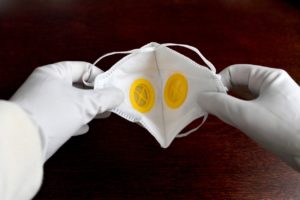
HSE issue safety alert for KN95 facemask
The HSE is warning against the use of KN95 facemasks as Personal Protective Equipment (PPE).
A safety alert has been issued [11 June 2020], urging all employers and suppliers not to purchase or use KN95 facemasks as PPE.
The safety alert can be found here.
Cleaning your workplace to reduce risk from coronavirus (COVID-19)
Advice from the HSE highlights the fact that coronavirus can transfer from people to surfaces. It can be passed on to others who touch the same surfaces. Keeping your workplace clean reduces the potential for coronavirus to spread and is a critical part of making and keeping your business ‘COVID-secure’, it says.
This guidance aims to help employers to clean the workplace to reduce risk. It is suggested that the frequency of cleaning may need to be increased how thoroughly cleaning is undertaken, as well as cleaning surfaces that are not normally cleaned.
The HSE has also issued advice within a document titled: Social distancing, keeping businesses open and in-work activities during the coronavirus (COVID-19) outbreak. It covers guidance on social distancing, essential and non-essential work, and in-work activity.
Also released is guidance covering RIDDOR, first aid and chemicals:
First aid cover and qualifications during coronavirus (COVID-19)
If first aid cover for a business is reduced because of coronavirus or the first aid training needed is not available, this advice points out that there are some things that can be done to still comply with the law.
Arrangements for regulation of chemicals during the coronavirus (COVID-19) outbreak
The HSE has made some administrative changes in the provision of services for regulating chemicals during the coronavirus outbreak. These are set out for each chemical regime, with updated details on how to contact the HSE.
Reporting outbreaks of coronavirus (COVID-19) – updated
COVID-19 early outbreak management information has been created, and updated, to make sure that people who run businesses or organisations:
- Know how to recognise and report an incident of coronavirus (COVID-19);
- Are aware of measures local health protection teams may advise in order to contain it.
This information is contained within ‘action cards’ that have been designed for specific situations where an outbreak could occur. This could be a:
- Restaurant or café;
- Construction site;
- Place of worship.
The cards are designed to be printed or downloaded to keep on hand in your business or organisation.
Updates have been made to the definition of an outbreak, in line with revised guidelines.
RIDDOR reporting of COVID-19
What to report?
- Dangerous occurrences: if something happens at work which results in (or could result in) the release or escape of coronavirus you must report this as a dangerous occurrence
- Cases of disease: exposure to a biological agent: if there is reasonable evidence that someone diagnosed with COVID-19 was likely exposed because of their work you must report this as an exposure to a biological agent using the case of disease report.
This HSE guidance is for the person reporting, usually the employer (known as the ‘responsible person’). The HSE advise following the RIDDOR reporting of COVID-19 guidance on what to report before using this detailed guidance.
It is recognised that these are not easy criteria to apply in the unusual circumstances presented by the coronavirus (COVID-19) pandemic. This guidance gives further detail to help determine if a report is needed and provides some principles to use when assessing the information available and making a judgement.
The aim of the guidance is to help responsible persons determine whether reports need to be made.
It covers:
- Dangerous Occurrences: What the law says.
- Is the incident reportable as a dangerous occurrence?
- Cases of disease, exposure to a biological agent: What the law says.
- Reasonable evidence of occupational exposure.
- Diagnosis.
- Work-related deaths due to occupational exposure to a biological agent: What the law says.
- Reasonable evidence of occupational exposure.
- Cause of death.
- Deaths following an existing case of disease report.
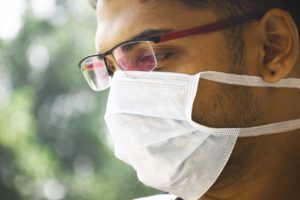
Face coverings to become mandatory on public transport
From 15 June, face coverings will be required while using public transport in England.
The government will work with operators to make it mandatory for passengers to wear face coverings when using public transport in England, the Transport Secretary Grant Shapps has announced.
Wherever possible people should continue to avoid public transport and walk, cycle or drive, but it is recognised that for some people this may not be an option. Transport usage has been slowly increasing, including on the tube which has seen around a 20% rise last week compared to the week before.
Other related content from SHP and IFSEC Global
On-demand webinar: Health and safety law conundrums during the COVID-19 pandemic
A guide to home working and self-isolation
COVID-19 – What does your organisation need to do to stay the right side of criminal law?
Can employers be prosecuted if employees are exposed to COVID-19?
Performing health/medical surveillance: Coronavirus
Legionella: Where low occupancy poses water-borne risks
What is the secret behind the success of the NHS Nightingale project?
Coronavirus: The security and fire safety sector
Delivering security at NHS Nightingale
What does the coronavirus mean for the fire safety sector?
Can facial recognition help contain the Coronavirus?
£800,000 worth of ‘coronavirus related’ cyber scams recorded
HMRC Furlough Advice
Coronavirus Job Retention Scheme
 The UK’s coronavirus furlough scheme will finish at the end of October, Chancellor Rishi Sunak recently confirmed. He also set out how employers will have to start sharing the cost of the scheme.
The UK’s coronavirus furlough scheme will finish at the end of October, Chancellor Rishi Sunak recently confirmed. He also set out how employers will have to start sharing the cost of the scheme.
From August, employers must pay National Insurance and pension contributions, then 10% of pay from September, rising to 20% in October. Also, workers will be allowed to return to work part-time from July, but with companies paying 100% of wages.
Mr Sunak said the Coronavirus Job Retention Scheme will adjust so “those who are able to work can do so”.
Some 8.4 million workers are having 80% of their salaries paid for by the government – up to £2,500 a month – under the scheme, which was originally intended to last until the end of July.
Under these changes, furloughed workers will continue to get 80% of pay until the end of October, but by then a fifth of their salary will have to be met by employers.
“Then, after eight months of this extraordinary intervention of the government stepping in to help pay people’s wages, the scheme will close,” Mr Sunak said.
How will the scheme change?
From 1 July, businesses will be allowed to bring furloughed employees back part-time, a month earlier than previously announced. The move is aimed to help support people back to work, the government said.
It will be down to individual firms to decide what part-time means. They will be able to set the hours and shift patterns staff will work when they return, but companies will have to pay wages while they are in work.
From 1 August the level of government grant will be reduced “to reflect that people are returning to work”.
Furloughed workers will continue to receive 80% of their pay, but from August it will include a growing employer contribution. It will start with bosses paying NI and pensions in August, plus 10% of pay in September, rising to 20% in October.
During August the government will pay 80% of wages up to a cap of £2,500. Employers will have to pay NI and pension contributions. For the average claim, that’s 5% of the gross employment costs the employer would have incurred had the employee had not been furloughed.
In September, the government will cut its grants to 70% of wages up to a cap of £2,190. Employers will pay NI and pension contributions and 10% of wages to make up the 80% total up to a cap of £2,500. That works out at 14% of the average gross employment costs the employer would have incurred.
In October the government grant will be cut to 60% of wages up to a cap of £1,875. Employers will pay NI and pension contributions and 20% of wages to make up the 80% total up to a cap of £2,500. That’s 23% of the gross employment costs the employer would have incurred had the employee not been furloughed.
The following guidance from HMRC is available:
- Work out 80% of your employees’ wages to claim through the Coronavirus Job Retention Scheme;
- Check if you can claim for your employees’ wages through the Coronavirus Job Retention Scheme;
- Check if your employer can use the Coronavirus Job Retention Scheme.
Emergency bill to strengthen coronavirus (COVID-19) response plans
The Coronavirus Bill, introduced in the House of Commons on 19 March 2020, received Royal Assent on 25 March 2020 and is now in force.
The purpose of the Act is to enable the Government to respond to an emergency situation and manage the effects of a covid-19 pandemic. A severe pandemic could infect up to 80% of the population leading to a reduced workforce, increased pressure on health services and death management processes. The Bill contains temporary measures designed to either amend existing legislative provisions or introduce new statutory powers which are designed to mitigate these impacts.
Vulnerable groups
Chief medical adviser Prof Chris Whitty advises that the group of people who should take “particular care to minimise their social contact” are:
- People over the age of 70
- Other adults who would normally be advised to have the flu vaccine (such as those with chronic diseases);
- Pregnant women.
Stay at home: Guidance for households with possible coronavirus (COVID-19) infection
Public Health England stay at home guidance is intended for:
- People with symptoms that may be caused by coronavirus, and do not require hospital treatment, who must remain at home until they are well;
- Those living in households with someone who shows symptoms that may be caused by coronavirus.
Coronavirus symptoms: UK adds loss of smell and taste to list
Loss of smell or taste have been added to the UK’s list of coronavirus symptoms that people should look out for and act upon. Until now, only a fever and cough were triggers for people to shut themselves away in self-isolation in case they had and could spread the infection. Ear, nose and throat doctors had been warning for weeks that more symptoms should be included. Scientific advisers told the government to update the advice.
If you or someone you live with has any of these symptoms – a new, continuous cough, fever or loss of smell or taste – the advice is stay at home for seven days to stop the risk of giving coronavirus to others.
Loss of smell and taste may still be signs of other respiratory infections, such as the common cold. Experts say fever and cough remain the most important symptoms of coronavirus to look out for.
Government launches plan to tackle loneliness during coronavirus lockdown
The Government has launched a major effort to tackle loneliness and social isolation during the coronavirus outbreak and period of social distancing. Led by Culture Secretary Oliver Dowden, the plan will aim to ensure that, for people of all ages and backgrounds, staying at home does not need to lead to loneliness.
The latest #Let’sTalkLoneliness public campaign has been rolled out to get people talking openly about loneliness, which includes new public guidance offering useful tips and advice on what to do to look after yourself and others safely.
In a wide-ranging cross-Government and cross-sector plan, Dowden has also announced that:
- Smaller, community-based organisations in England helping people to stay connected in local communities will benefit from being a priority category of the £750 million package of support for charities announced by the Chancellor on 8 April;
- National loneliness organisations will be allocated a guaranteed £5 million worth of funding to continue and adapt their critical work at this time;
- As part of the national effort, loneliness charities including Age UK will be supported to work with NHS Volunteer Responders in their communities.
More information about ‘Let’s Talk Lonliness, can be found here.
Health and wellbeing considerations for home working and self-isolation
Many businesses have begun to embrace the idea of flexible working and working from home and, in the current climate, more and more of us may find ourselves plunged into doing so for longer than the one to two days a week, which employers and employees adapt to fairly easily, potentially leading to increased work-related stress and mental health conditions for employers.
It is predicted that by 2020, half of UK’s workforce will work from home, according to the Office for National Statistics. SHP and The Healthy Work Company have compiled a home working hub to provide research, case studies, videos and resources to enable you to lead this transition in a way which safeguards the health and wellbeing of your teams and maximises the opportunity to embrace new ways of working for the future and how to maintain a positive mental health and limit stress, as well as helping to create a healthy workplace for individuals.
How do I know if I have coronavirus?
BBC News’ Health and Science Reporter, Laura Foster, takes a look in this short video.
Can employers be prosecuted if employees are exposed to COVID-19?
Amidst all the coronavirus headlines, some commentators have speculated that employers may be about to face prosecution if they don’t take all precautions possible to protect staff and third parties from infection. Is this really the case, find out here?
UK Budget 2020
Chancellor Rishi Sunak unveiled a £30bn package to help the economy get through the coronavirus outbreak in his Budget on 11 March 2020. He added that the NHS would get “whatever resources it needs”.
The measures put in place to mitigate the effect of the coronavirus outbreak include:
- £5bn emergency response fund to support the NHS and other public services;
- Statutory sick pay will be paid to all those who choose to self-isolate, even if they don’t have symptoms;
- Those on employee benefits who get ill will be able to “claim from day one instead of day eight”;
- A £500m “hardship fund” to be given to local authorities to help vulnerable people in their areas;
- Firms with fewer than 250 staff will be refunded for sick pay payments for two weeks;
- Small and medium-sized businesses will be able to access “business interruption” loans of up to £1.2m;
- Business rates will be abolished for firms in the retail, leisure and hospitality sectors with a rateable value below £51,000. The measure will apply to firms including shops, cinemas, restaurants and hotels;
- “Fiscal loosening” of £18bn to support the economy this year, taking the total fiscal stimulus to £30bn.
Coronavirus pandemic
 On 11 March, the outbreak was labelled a coronavirus pandemic by the World Health Organization (WHO). WHO Chief Dr Tedros Adhanom Ghebreyesus said the number of cases outside China had increased 13-fold over the past two weeks. He said he was “deeply concerned” by “alarming levels of inaction” over the virus.
On 11 March, the outbreak was labelled a coronavirus pandemic by the World Health Organization (WHO). WHO Chief Dr Tedros Adhanom Ghebreyesus said the number of cases outside China had increased 13-fold over the past two weeks. He said he was “deeply concerned” by “alarming levels of inaction” over the virus.
A pandemic is a disease that is spreading in multiple countries around the world at the same time.
How does coronavirus spread?
When someone who has COVID-19 coughs or exhales they release droplets of infected fluid. Most of these droplets fall on nearby surfaces and objects – such as desks, tables or telephones.
People could catch COVID-19 by touching contaminated surfaces or objects – and then touching their eyes, nose or mouth. If they are standing within one meter of a person with COVID-19 they can catch it by breathing in droplets coughed out or exhaled by them. In other words, COVID-19 spreads in a similar way to flu.
Preventing coronavirus in the workplace
The guidance stresses that employers should start taking these the following measures now, even if COVID-19 has not arrived in the communities where they operate:
- Make sure your workplaces are clean and hygienic.
- Surfaces (eg desks and tables) and objects (eg telephones, keyboards) need to be wiped with disinfectant regularly.
- Promote regular and thorough hand-washing by employees, contractors and customers.
- Put sanitizing hand rub dispensers in prominent places around the workplace. Make sure these dispensers are regularly refilled;
- Display posters promoting hand-washing;
- Offer guidance from occupational health and safety officers;
- Make sure that staff, contractors and customers have access to places where they can wash hands with soap and water.
- Promote good respiratory hygiene in the workplace.
- Display posters promoting respiratory hygiene. Combine this with other communication measures;
- Ensure tissues are available at your workplaces, for those who develop a runny nose or cough at work, along with closed bins for hygienically disposing of them;
- Advise employees and contractors to consult national travel plans before going on business trips.
- Brief your employees, contractors and customers that if COVID-19 starts spreading in your community anyone with even a mild cough or low-grade fever (37.3 C or more) needs to stay at home.
- Make clear to employees that they will be able to count this time off as sick leave.
The guidance goes on to advise on procedures for employees who travel (before travelling, during and after), and sets out advice for getting a business ready should COVID-19 arrive in the workplace. It is stressed that simple a precautionary measure and planning can make a big difference. Action now will help protect your employees and your business.
COVID-19 – What does your organisation need to do to stay on the right side of the criminal law?
Your organisation is now making preparations for the coming coronavirus pandemic and you are deluged with specific concerns, information and action plans that need to be developed. Amongst the many questions being asked by the Board, should be a cut through question: ‘What are our health and safety criminal law obligations in dealing with the Coronavirus, what do we have to do and how can we protect ourselves from blame if we get it wrong?’
Read Lawyer Simon Joyston-Bechal’s take on it here.
How the UK dealt with coronavirus
The initial response to the outbreak had the fundamental objectives to deploy phased actions to Contain, Delay, and Mitigate any outbreak, using Research to inform policy development. The different phases, types and scale of actions depends upon how the course of the outbreak unfolds over time, said the plan. The overall phases of the plan to respond to COVID-19 are as follows:
- Contain: detect early cases, follow up close contacts, and prevent the disease taking hold in this country for as long as is reasonably possible;
- Delay: slow the spread in this country, if it does take hold, lowering the peak impact and pushing it away from the winter season;
- Research: better understand the virus and the actions that will lessen its effect on the UK population; innovate responses including diagnostics, drugs and vaccines; use the evidence to inform the development of the most effective models of care;
- Mitigate: provide the best care possible for people who become ill, support hospitals to maintain essential services and ensure ongoing support for people ill in the community to minimise the overall impact of the disease on society, public services and on the economy.
Ultimately, the response to COVID-19 is guided by the international situation, the advice of organisations such as the WHO, surveillance, data modelling based on the best available evidence and the recommendations of expert bodies.
System wide response plans for pandemic influenza, focused on the continuity of public and critical services and the stability of the economy, have been adapted for COVID-19, based on the best available scientific evidence and advice. Click here for the latest information on the current situation.
It is stressed that the nature and scale of the response depends on the course of the disease, which cannot be predicted accurately at this point. As understanding of the disease increases and its impact becomes clearer, the government will issue further detailed advice about what to expect if/when further measures become necessary.
Coronavirus delay phase
In addition to actions taken as part of the Contain phase, the plan emphasises the actions that people can be taking themselves to help delay the peak of the infection; especially encouraging people to wash hands more often; and the catch it, bin it, kill it strategy for those with coughs and sneezes.
Delaying the spread of the disease requires everyone to follow the advice set out in this document. The benefits of doing so are that if the peak of the outbreak can be delayed until the warmer months, the risk of overlapping with seasonal flu and other challenges (societal or medical) that the colder months bring can be significantly reduced.
Coronavirus: Advice for businesses
Businesses should also ensure that they keep up to date with the situation as it changes at.
Click here to read the government’s plan in full.
Emergency support
The TUC is calling on the government to respond to the COVID-19 outbreak by providing emergency support for the millions of UK workers who are currently missing out on Statutory Sick Pay (SSP).
In a letter to Matt Hancock and Thérèse Coffey, TUC General Secretary Frances O’Grady warns that inadequate provision of sick pay could stop people taking up public health advice, since many workers will struggle to meet basic living costs if they can’t attend work for a prolonged period.
As a result, some may feel they have no choice but to go to work while ill, or against government advice.
Currently, nearly 2 million of the lowest-paid workers don’t earn enough to qualify for statutory sick pay. According to TUC analysis this includes:
- 34% of workers on zero-hours contracts;
- 1 in 10 women in work;
- More than a fifth (22%) of workers aged 16-24;
- More than a quarter (26%) of workers aged 65 and over, identified by government as one of the groups most vulnerable to the virus.
WHO warns that supplies of PPE is “rapidly depleting”
In his daily briefing in Geneva on March 4 WHO Director-General Dr Tedros Adhanom Ghebreyesus warned that supplies of PPE, such as the gloves, medical masks, respirators, goggles, face shields, gowns, and aprons used by health workers fighting coronavirus are “rapidly depleting” and warned against “hoarding and misuse”.
“We are concerned that countries’ abilities to respond are being compromised by the severe and increasing disruption to the global supply of personal protective equipment … caused by rising demand, hoarding and misuse,” he said.
Healthcare workers rely on personal protective equipment to protect themselves and their patients from being infected and infecting others. But, says WHO, shortages are leaving doctors, nurses and other frontline workers dangerously ill-equipped. “Without secure supply chains, the risk to healthcare workers around the world is real. Industry and governments must act quickly to boost supply, ease export restrictions and put measures in place to stop speculation and hoarding. We can’t stop COVID-19 without protecting health workers first,” said Dr Tedros Adhanom Ghebreyesus.
Since the start of the COVID-19 outbreak, prices have surged. Surgical masks have seen a sixfold increase, N95 respirators have trebled and gowns have doubled.
Supplies can take months to deliver and market manipulation is widespread, with stocks frequently sold to the highest bidder.
WHO has so far shipped nearly half a million sets of personal protective equipment to 47 countries,* but supplies are rapidly depleting.
Based on WHO modelling, an estimated 89 million medical masks are required for the COVID-19 response each month. For examination gloves, that figure goes up to 76 million, while international demand for goggles stands at 1.6 million per month.
Recent WHO guidance calls for the rational and appropriate use of PPE in healthcare settings, and the effective management of supply chains.
WHO is working with governments, industry and the Pandemic Supply Chain Network to boost production and secure allocations for critically affected and at-risk countries.
To meet rising global demand, WHO estimates that industry must increase manufacturing by 40%.
Governments should develop incentives for industry to ramp up production, says WHO. This includes easing restrictions on the export and distribution of personal protective equipment and other medical supplies.
Every day, WHO is providing guidance, supporting secure supply chains, and delivering critical equipment to countries in need.
The Department of Health and Social Care is evaluating the potential impact of coronavirus on the supply of medicines and medical goods.
There were no current medicine shortages in the UK linked to the situation in China but the UK government is taking precautionary measures to help continue the uninterrupted supply of medicines to patients in the UK.
Coronavirus: no evidence that food is a source or transmission route
EFSA is closely monitoring the situation regarding the outbreak of coronavirus disease (COVID-19) that is affecting a large number of countries across the globe. There is currently no evidence that food is a likely source or route of transmission of the virus.
EFSA’s Chief Scientist, Marta Hugas, said: “Experiences from previous outbreaks of related coronaviruses, such as severe acute respiratory syndrome coronavirus (SARS-CoV) and Middle East respiratory syndrome coronavirus (MERS-CoV), show that transmission through food consumption did not occur. At the moment, there is no evidence to suggest that coronavirus is any different in this respect.”
The European Centre for Disease Prevention and Control (ECDC) has said that while animals in China were the likely source of the initial infection, the virus is spreading from person to person.
£800,000 worth of ‘coronavirus related’ cyber scams recorded
The National Fraud Intelligence Bureau has warned the public to be aware of scams and fraudulent emails relating to the coronavirus outbreak. Similar scams have reportedly already tricked the UK public out of £800,000, according to the police.
 What is Coronavirus?
What is Coronavirus?
Coronavirus (2019-nCoV) is a new respiratory illness that has not previously been seen in humans.
Where do coronaviruses come from?
Coronaviruses are viruses that circulate among animals but some of them are also known to affect humans. After they have infected humans, they can eventually be transmitted to humans.
What is the mode of transmission? How (easily) does it spread?
Because it’s a new illness, it is not known exactly how coronavirus spreads from person to person, but similar viruses spread by respiratory droplets that people sneeze, cough, or exhale. While animals are the source of the virus, this virus is now spreading from one person to another (human-to-human transmission). At time of writing, there is currently not enough epidemiological information to determine how easily and sustainably this virus is spreading between people.
What are the symptoms?
With many similarities of a common cold, the main signs of infection are fever (high temperature) and a cough as well as shortness of breath and breathing difficulties and sore throat.
How to protect yourself
The NHS advise the following measures to help stop germs like coronavirus spreading:
- Always carry tissues with you and use them to catch your cough or sneeze. Then bin the tissue, and wash hands, or use a sanitiser gel;
- Wash hands often with soap and water, especially after using public transport. Use a sanitiser gel if soap and water are not available;
- Avoid touching your eyes, nose and mouth with unwashed hands;
- Avoid close contact with people who are unwell.
Coronavirus: Supporting Workers
What are your rights if working from home?
This article has been published by BBC News, and addresses questions around worker’s rights if working from home during the pandemic. Under the stringent new measures announced by the UK government [16 March] to combat the spread of coronavirus, everyone should work from home if they can.
For many people, homeworking will not be possible, but they still face the possibility of self-isolation, under the guidelines announced by Prime Minister Boris Johnson.
Changes have been made to the sick pay system. The Statutory Sick Pay (General) (Coronavirus Amendment) (No. 2) Regulations 2020 are in force. There has been concern that people will be more likely to infect others if they do not have incentives to stay at home when they are at risk.
IOSH stress that employers have a role to play in preventing the spread of the disease by taking sensible action to prevent the spread of COVID-19 such as ensuring that workers have access to appropriate hygiene facilities such hot water, soap and bins to get rid of used tissues.
Workers are advised to maintain good hygiene standards around the workplace by following the latest advice from the World Health Organization’s (WHO) website which includes the following basic protective measures:
- Wash hands frequently with alcohol-based hand wash or wash with soap and water;
- Maintain social distancing – maintain at least 1 meter (3 feet distance) between yourself and anyone who is coughing or sneezing;
- Avoid touching eyes, mouth and nose;
- Practice respiratory hygiene;
- Stay informed and follow the advice given by health care providers.
COVID-19: support for businesses
The Chancellor has set out a package of temporary, timely and targeted measures to support public services, people and businesses through this period of disruption caused by COVID-19. This includes a package of measures to support businesses including:
- a Coronavirus Job Retention Scheme
- deferring VAT and Self-Assessment payments
- a Self-employment Income Support Scheme
- a Statutory Sick Pay relief package for small and medium sized businesses (SMEs)
- a 12-month business rates holiday for all retail, hospitality, leisure and nursery businesses in England
- small business grant funding of £10,000 for all business in receipt of small business rate relief or rural rate relief
- grant funding of £25,000 for retail, hospitality and leisure businesses with property with a rateable value between £15,000 and £51,000
- the Coronavirus Business Interruption Loan Scheme offering loans of up to £5 million for SMEs through the British Business Bank
- a new lending facility from the Bank of England to help support liquidity among larger firms, helping them bridge coronavirus disruption to their cash flows through loansthe HMRC Time To Pay Scheme.
The guidance document sets out detailed information on the following:
- Support for businesses through the Coronavirus Job Retention Scheme
- Support for businesses through deferring VAT payments
- Support for businesses through deferring Self-Assessment payments on account
- Support for self-employed through the Self-employment Income Support Scheme
- Support for businesses who are paying sick pay to employees
- Support for retail, hospitality and leisure businesses that pay business rates
- Support for nursery businesses that pay business rates
- Support for businesses that pay little or no business rates
- Support for businesses through the Coronavirus Business Interruption Loan Scheme
- Support for large businesses through the Coronavirus Large Business Interruption Loan Scheme
- Support for larger firms through the COVID-19 Corporate Financing Facility
- Support for businesses paying tax: Time to Pay service
- Commercial insurance
- Protection from eviction for commercial tenants
- Extension of Business Improvement Districts (BIDs) arrangements.
Support for businesses in Scotland, Wales and Northern Ireland.
COVID-19: guidance for employees
This guidance sets out advice on:
- going to work
- staying at home
- sick pay
- furloughed workers
- claiming benefits.
Poster now available
The poster is to support the guidance for employers and businesses; it is available here.
Social distancing in the workplace during coronavirus (COVID-19): sector guidance
This advice is for employers on social distancing during coronavirus (COVID-19). It is set out as tailored advice for different scenarios, to provide an example of how social distancing and other measures might be implemented by employers in England to help protect their workforce and customers from coronavirus while still continuing to trade. These are not intended to be comprehensive or to represent every business’s situation but are described as illustrative examples.
The examples cover the following:
- Shops running a pick-up or delivery service
- Tradespeople and working in people’s homes
- Construction
- Manufacturing and processing businesses
- Retail
- Logistics businesses
- Outdoor businesses
- Farming: visiting farms for animal health and welfare
- Fishing or other short-term offshore work
- Cargo-shipping or other long-term offshore work
- Transport businesses
- Waste management businesses
Acas coronavirus guidance
Shielding and vulnerable people
This advice from Acas stresses that people who are at high risk of getting a severe illness if they catch coronavirus (COVID-19) are ‘clinically vulnerable’, and as such must pay particular attention to social distancing.
Employers must be especially careful and take extra steps for anyone in their workforce who is in a vulnerable group. Some people will have been identified as ‘clinically extremely vulnerable’, which means they have a very high risk of severe illness from coronavirus. Clinically extremely vulnerable people should take particularly strict social distancing measures (‘shielding’). Anyone in this group will have previously had a letter from the NHS or their GP telling them this, and may have been shielding before.
For people living with somebody who is shielding, the government’s advice is that they should work from home if they can during the national lockdown in England (from 5 November 2020). If they cannot work from home, they should go into work. They should speak to their employer if they have any concerns.
Acas guidance: Working safely during coronavirus
ACAS has updated its advice, highlighting the current government coronavirus advice is that anyone who can work effectively from home should do so.
For workplaces that are open, everyone should:
- Follow government guidance on making the workplace safe;
- Avoid busy commuting times on public transport where travel is essential, and wear a face covering;
- Wash their hands regularly.
You must not go to work if you or anyone in your household has symptoms.
In terms of making a workplace safe, employers must:
- Encourage staff to work from home, wherever possible;
- Have completed a ‘risk assessment’, and taken reasonable steps to prevent harm in the workplace;
- Follow the government guidelines on safer working.
Further guidance is given on social distancing at work, and what employers should do while a workplace is closed. The importance of maintaining communication with workers is highlighted.
Acas guidance: Working from home
In this guidance, employers and employees are advised to be flexible and sensitive to each other’s situation when working from home because of the coronavirus (COVID-19) pandemic.
Flexible working during the pandemic and beyond
Published by the CIPD, this guidance considers how flexible working may be approached in the short and long term, both to support health and safety obligations to employees returning to the traditional workplace, but also to generate potential people benefits and opportunities for organisations.
It suggests that, before the pandemic, only around 5% of the workforce worked mainly from home. This had increased steadily for five years, but the current situation has escalated remote working at a rapid pace. However, pandemic forms of flexibility are very different from typical flexible working approaches: potentially balancing work with childcare, home-schooling and supporting vulnerable relatives, as well as working from kitchens and living rooms. There are lessons to be learned about flexible working, but the unusual nature of the situation should be borne in mind. Organisations should also note that remote or homeworking is just one form of flexible working, of which there are many.
Organisations should review the fact that flexible working has many potential benefits for organisations and employees. There is a wide range of research and a strong evidence base for how flexibility can support inclusion, help to reduce the gender pay gap, support sustainability initiatives, attract and retain talented individuals, increase productivity and support wellbeing. Potential concerns about people being overlooked for promotion if working from home more than other colleagues may also need to be addressed.
Prior to the pandemic, flexible working uptake was slow, but there are early indications that many employees will wish to continue some degree of homeworking (or flexible working in general) following the pandemic, says the guidance.
It goes on to address:
- flexible working and the law
- flexible working in the short term
- addressing short term employee needs
- returning to the workplace
- flexible working – longer term considerations.
Case studies are included to illustrate good practice.
Mental health during coronavirus
Workplace expert Acas has published new guidance to help staff manage their mental health at work during coronavirus.
An Acas-commissioned YouGov survey conducted during coronavirus has found that nearly 2 out of 5 employees working from home felt stressed, anxious or experienced mental health difficulties due to their working situation.
The poll also found that:
- 1 in 2 people working from home felt isolated
- 7 out of 10 felt that they were missing social interactions with others at work.
Acas’s full advice includes practical steps for employees, managers and employers to help everyone’s mental health during this difficult time.
RIDDOR reporting of COVID-19
What to report?
- Dangerous occurrences: if something happens at work which results in (or could result in) the release or escape of coronavirus you must report this as a dangerous occurrence
- Cases of disease: exposure to a biological agent: if there is reasonable evidence that someone diagnosed with COVID-19 was likely exposed because of their work you must report this as an exposure to a biological agent using the case of disease report.
First aid cover and qualifications during coronavirus (COVID-19)
If first aid cover for a business is reduced because of coronavirus or the first aid training needed is not available, this advice points out that there are some things that can be done to still comply with the law.
Arrangements for regulation of chemicals during the coronavirus (COVID-19) outbreak
The HSE has made some administrative changes in the provision of services for regulating chemicals during the coronavirus outbreak. These are set out for each chemical regime, with updated details on how to contact the HSE.
Wellbeing and mental health during the coronavirus (COVID-19) pandemic
The Foreign and Commonwealth Office (FCO) have issued advice about how to look after wellbeing and mental health for those who cannot return to the UK during the COVID-19 pandemic. It also includes information on how FCO may be able to help, if a British national needs help, if unable to return to the UK from abroad.
It advises those in such a position to keep in regular contact with the people who usually offer support, such as family, friends and colleagues, especially if you are self-isolating abroad.
Self-isolating: What this means in practice
This means staying at home for 10 days and not going to work, schools or public areas.
Avoid having visitors to your home; however, it is OK for friends, family or delivery drivers to drop off food.
These steps are recommended to limit the potential spread of infection.
Find out what to do using the NHS 111 online coronavirus service.
The NHS advice is do not go to a GP surgery, pharmacy or hospital. Call 111 if you need to speak to someone.
Scotland, Wales or Northern Ireland:
- Scotland: call your GP surgery or call 111 if your surgery is not open;
- Wales: call 111;
- Northern Ireland: call 111.
Legislation
The Coronavirus Bill, introduced in the House of Commons on 19 March 2020, received Royal Assent on 25 March 2020 and is now in force.
The purpose of the Coronavirus Act is to enable the Government to respond to an emergency situation and manage the effects of a covid-19 pandemic. A severe pandemic could infect up to 80% of the population leading to a reduced workforce, increased pressure on health services and death management processes. The Bill contains temporary measures designed to either amend existing legislative provisions or introduce new statutory powers which are designed to mitigate these impacts.
The Bill aims to support Government in the following:
- Increasing the available health and social care workforce;
- Easing the burden on frontline staff;
- Containing and slowing the virus;
- Managing the deceased with respect and dignity;
- Supporting people.
The Act is required as part of a concerted effort across the whole of the UK to tackle the covid-19 outbreak. The intention is that it will enable the right people from public bodies across the UK to take appropriate actions at the right times to manage the effects of the outbreak.
As part of its contingency planning, the Government has considered what measures would be needed during a severe covid-19 outbreak to reduce the pressure of key services and limit the spread of infection.
It is stressed that these are extraordinary measures that do not apply in normal circumstances. For this reason, the legislation will be time-limited for two years and it is neither necessary nor appropriate for all of these measures come into force immediately. Instead, many of the measures in can be commenced from area to area and time to time, so as to ensure that the need to protect the public’s health can be aligned with the need to safeguard individuals’ rights. These measures can subsequently be suspended and then later reactivated, if circumstances permit, over the lifetime of the Act.
Coronavirus bill: summary of impacts
The Department of Health and Social Care issued an impact assessment document. It provides a summary of impacts relating to clauses within the Coronavirus Bill 2020 (now Act) and provides an overview of the impacts considered for each clause.
The document is available here.
This instrument amends Schedule 4 of the Health Protection (Coronavirus, Restrictions) (All Tiers) (England) Regulations 2020 (“the All Tiers Regulations”) (S.I. 2020/1374) to move all of England currently in Tiers 1, 2 or 3 into Tier 4. It also makes some amendments to the Tier 4 restrictions in order to achieve a national lockdown. This includes:
- Removing outdoor recreation as an exception from the restrictions on leaving home.
- Restricting takeaway and click and collect of alcohol from hospitality businesses.
- Closing zoos, aquariums, safari parks and outdoor animal attractions, outdoor sports facilities and retail travel agents.
- Restricting childcare (other than early years provision) and supervised activities for children to vulnerable children and children of critical workers and removing the exemption to the gatherings restrictions for parent and child groups.
It also changes the expiry date of the All Tiers Regulations to 31 March 2021.
This instrument also amends the Health Protection (Coronavirus, Restrictions) (England) (No.3) Regulations 2020 (S.I. 2020/750) (“the No.3 Regulations”) to extend these regulations by six months so that they expire on 17 July 2021 and remove the ability for a police community support officer (PCSO) to use ‘reasonable force’ in enforcing the No. 3 Regulations.
The Regulations make some changes to the Tier 4 restrictions including:
- Removing exceptions for outdoor recreation, outdoor sports gatherings for under 18s and outdoor sports (other than for specific exceptions).
- Permitting childcare and supervised activities to only be used for children of critical workers and vulnerable children and removing the exception for parent and child groups.
- Closing zoos and all animal attractions, outdoor sports venues and retail travel agents.
- Restricting the sale of alcohol by hospitality businesses for takeaway and click and collect.
Overall, the amendments are being made to ensure that appropriate levels of intervention are made in the right places to manage COVID-19 outbreaks and help suppress the virus.
This instrument enables a number of public health measures to be taken to reduce the public health risks posed by the spread of severe acute respiratory syndrome coronavirus 2 (SARS-CoV-2) in England which causes the disease COVID-19.
It came into force on 5 November 2020 and applies to England only.
The Regulations impose a nationwide lockdown for 28 days in order to prevent the spread of coronavirus, thus easing NHS capacity and ensuring that the health system is not overwhelmed during the winter months. It is expected that, at the end of that period, the previous local alert levels introduced in October will once again be brought into force. This policy is subject to review.
The following Regulations are revoked:
- Health Protection (Coronavirus, Local COVID-19 Alert Level) (Medium) (England) Regulations 2020 (S.I. 2020/1103), other than Schedule 3 to those Regulations
- Health Protection (Coronavirus, Local COVID-19 Alert Level) (High) (England) Regulations 2020 (S.I. 2020/1104), other than Schedule 3 to those Regulations
- Health Protection (Coronavirus, Local COVID-19 Alert Level) (Very High) (England) Regulations 2020 (S.I. 2020/1105), other than Schedule 3 to those Regulations.
The furlough scheme will be extended to run from 5 November 2020 to 2 December 2020. This provision is not covered by this instrument.
The instrument introduces a number of social restrictions and business closures.
Regulation 5 sets out a restriction on people leaving the place where they are living without reasonable excuse. Examples of reasonable excuses include the exceptions listed in Regulation 6. This does not pply to someone who is homeless.
The Regulation 6 exceptions include:
- for necessary purposes:
- to obtain or access supplies and/or services from businesses and services that are open for oneself, one’s household, or a vulnerable person
- to access banking services
- to take exercise or visit a public open place for the purposes of open air recreation
- to attend a place of worship;
- to attend an event commemorating Remembrance Sunday or Armistice Day
- to undertake activities in relation to buying, renting, selling or letting property
- to visit a member or members of a linked household (known as a ‘bubble’)
- to collect takeaway food or goods that have been ordered for collection; or
- to recycle or dispose of waste
- for work, care and legal purposes
- for the purposes of education and training
- for emergency assistance
- for accessing critical public services and services provided by voluntary or charitable services
- so that elite athletes can train or compete
- to attend to personal medical needs, or to visit those giving birth or in hospital or care
- to give respite or support to other people, or to access it for oneself
- to visit a relative or friend on their deathbed, including if for their wedding, or to attend their funeral
- to look after children (for example, to take them to school, or to see their siblings, or to meet a prospective adopter)
- to provide for the welfare of pets
- to return home, where the person is on holiday immediately before this instrument comes into force
- to visit a family member or friend in prison.
Gatherings of more than two people are prohibited in public outdoor places and gatherings of two or more people are prohibited in all other places, unless an exception applies. Regulation 11 sets out the exceptions to the restrictions on gatherings.
The Regulations are available here.
The Health Protection (Coronavirus Restrictions) (Wales) (Amendment) (No. 6) Regulations 2020
Regulation 2 of these Regulations amends the Health Protection (Coronavirus Restrictions) (Wales) Regulations 2020. The amendments consist of several provisions, including to:
- permit shops previously required to be closed (and similar premises including car dealerships and outdoor markets) to open, but note that they must comply with requirements relating to physical distancing and their customers must remain in the area local to where they are living
- remove limitations on marriage and civil partnership ceremonies taking place, subject to physical distancing requirements
- permit places of worship to open for private prayer
- state that it is a reasonable excuse to leave your local area or gather indoors with other persons in order to:
- move house;
- prepare a property for someone to move in;
- visit an estate or letting agent, developer sales office or show home in connection with the purchase, sale or rental of an unoccupied property;
- view an unoccupied property.
The Regulations came into force on 22 June 2020.
Coronavirus (Scotland) Act 2020
The Coronavirus (Scotland) Bill received Royal Assent on 6 April 2020.
The purpose of the Act is to enable the Government to respond to an emergency situation and manage the effects of a covid-19 pandemic. It contains temporary measures designed to either amend existing legislative provisions or introduce new statutory powers which are designed to mitigate these impacts.
The measures set out are deemed essential to respond to this current emergency and cover a range of measures intended to ensure that:
- renters are protected while confined to their homes
- the justice system is able to deliver essential services
- public services, business and consumers can still operate despite new restrictions.
Coronavirus (COVID-19): Phase 3: business and physical distancing guidance
The Scottish Government stresses that all businesses must act responsibly and align fully with the physical distancing measures introduced to protect the nation’s heath, well-being and economic future.
It also stresses that remote working should remain the default position for those who can. Where that is not possible businesses and organisations are encouraged to manage travel demand through staggered start times and flexible working patterns.
All business premises, sites and attractions not required by law to close should remain closed unless:
- essential to the health and welfare of the country during this crisis (as defined below) or
- supporting (or being repurposed to support) essential services or
- your business is able to open in accordance with the current position in the Scotland’s Route Map and
- apart from in exceptional circumstances critical to lives and safety, capable of working in a way which is fully consistent with established physical distancing advice
- every person in Scotland should continue to comply with the measures contained in: Coronavirus (COVID-19): staying safe and protecting others.
The guidance covers staying safe, businesses and premises that must remain closed, and compliance.
Coronavirus (COVID-19) Phase 3: staying safe and protecting others
[Scotland]
This document details the changes being made to the Scottish Government’s Phase 3 Route Map. The guidance applies from 14 September.
In Phase 3 regulations are still in place:
- Stopping some types of gatherings;
- Closing certain businesses, premises and venues.
Guidance on seeing friends and family covers:
- Meeting others indoors and outdoors;
- Extended households;
- Shared parenting.
No more than six people in total (from a maximum of two households) may meet at any time in the settings set out, with exceptions as explained in the guidance.
Children under 12 from the two households do not need to maintain physical distance and do not count towards the total number of people at the gathering. Adults accompanying these under 12s should maintain physical distancing from other adults not in their own household or an extended household.
The full Phase 3 document is available here.
(Scotland)
These Regulations amend the Health Protection (Coronavirus) (Restrictions and Requirements) (Local Levels) (Scotland) Regulations 2020 to introduce a requirement to stay at home for those living in a Level 4 area, similar to the requirement included in legislation in March 2020. These Regulations also reduce the number of people who can meet for social purposes in Level 4. The limit is now 2 people from 2 households, rather than 6 people from 2 households. Existing socialisation rules still apply for those under 12 and the limit for 12-17 year olds has been reduced to 2 people from 2 households.
These Regulations also adjust the rules on organised outdoor activity for under 18s and for outdoor exercise in Level 4 to prohibit those aged 12 and over from undertaking such activities unless the general social gathering limit is followed.
A requirement to stay at home for those living in Level 4 areas is being introduced now to take strong and urgent action to try to mitigate the impact of the new strain. The requirement to stay at home is similar to the requirement used in legislation earlier in the year, from March onwards. There are a number of reasonable excuses to ensure the requirement to stay at home is proportionate, some examples include obtaining food or medical supplies or for work, where it is not possible for the person to do so from home. A full list is found in the legislation.
These regulations provide additional powers to allow the requirement to be enforced by police, where required.
Health Protection (Coronavirus, Public Health Information for Passengers Travelling to England) Regulations 2020
This instrument imposes requirements on operators of commercial transport services for passengers travelling to England by sea, air or rail, from outside of the common travel area.
Operators are required to ensure information is provided to passengers about coronavirus, coronavirus disease and related duties and public health guidance to all passengers. The information must be provided to passengers before they book their travel, when they check in and whilst they are on board the vessel, aircraft or train. The aim is to allow those wishing to travel to England to make an informed choice about whether to complete their journey and increase public awareness of, and thereby compliance with, public health measures to be taken to reduce the spread of severe acute respiratory syndrome coronavirus 2 (SARS-CoV-2) which causes the disease Covid-19.
The Regulations came into force on 8 June 2020.
The Regulations require operators to keep records of the steps taken to comply with the requirement imposed by the Regulations, so that authorised persons may audit compliance. Operators may therefore be required to provide authorised persons with copies of these records, or other information necessary to determine whether they have complied.
Supports for businesses impacted by COVID-19 [Ireland]
[updated 24 July 2020]
This Guide contains detailed information on a huge range of supports from the Department of Business, Enterprise and Innovation, and other Government Departments and Agencies and advice on other practical steps businesses can take at this time.
The Guide is divided into 6 sections and also includes an Appendix which contains a COVID-19 Business Continuity Checklist which outlines some of the key risks to businesses as well as preparatory actions that can be taken to respond.
- Part 1 highlights a number of practical steps that businesses can initially take such as talking to your bank, checking your insurance details and engaging with Revenue.
- Part 2 sets out in detail the business supports that are available, ranging from loans to grants to vouchers to mentoring. These include the €450m Strategic Banking Corporation Ireland (SBCI) COVID-19 Working Capital Scheme, the €250m Restart Fund for Micro and Small businesses, Enterprise Ireland supports including the €2,500 Lean Business Continuity Voucher and the €5,000 Business Financial Planning Grant as well as supports from the Local Enterprise Offices (LEOs) like the Trading Online Voucher and the Mentor Programme.
- Part 3 of the Guide outlines other Government supports that are available to businesses. Details are provided on the Pandemic Unemployment Payment, the Temporary Wage Subsidy Scheme and short time work supports. In addition, links are provided to other important resources like the NSAI Workplace and Retail Protection and Improvement Guides, details on the commercial rates waiver and amendments to planning and development regulations to temporarily allow restaurants to operate as takeaways, etc.
- Part 4 this section highlights the Roadmap for Reopening Society and Business, the Return to Work Safely Protocol and the Health and Safety Authority (HSA) COVID-19 Templates and Checklists.
- Part 5 provides information on the COVID-19 Rapid Response Funding Call which was developed by the Government’s research and innovation agencies to help respond to the COVID-19 pandemic. This Call was an agile and adaptive initiative to support development of innovative solutions (including STEM-based, social/behavioural science) that can have rapid demonstrable impact on the current COVID-19 crisis in Ireland.
- Part 6 of the Guide highlights those websites where up-to-date official information is available.
As the COVID-19 situation changes, Government supports also change to address new difficulties and provide solutions and guidance.
Further information
- Plans to contain Coronavirus are set out by the UK Government
- Foreign and Commonwealth Office travel advice.
- Department of Health and Social Care and Public Health England: Coronavirus (COVID-19): latest information and advice.
- WHO EURO has released a guide on how to stay physically active during self-quarantine;
- Government to grant permission for pubs and restaurants to operate as takeaways as part of coronavirus response: government press release
- COVID-19: specified countries and areas with implications for returning travellers or visitors arriving in the UK.
- Department of Health and Social Care and Public Health England: Coronavirus (COVID-19): latest information and advice.
- Coronavirus (COVID-19): Common questions, NHS.
- CIPD Advice
- Updated CIPD FAQs.
- IOSH Coronavirus pages.
- World Health Organization has published updated recommendations (29 February) for international traffic in relation to COVID-19 outbreak.
- World Health Organization Situation Reports for the latest details on the outbreak.
- World Health Organization: Getting your workplace ready for COVID-19.
- UK Novel coronavirus (2019-nCoV) guidance for health professionals.
- IOSH Report Managing the safety, health and security of mobile workers.
- Latest global figures: Coronavirus COVID-19 Global Cases by Johns Hopkins CSSE.
The World Health Organization also has a wealth of information available; in particular ‘coronavirus myth busters’ which is a useful page of information, addressing common concerns about the virus outbreak.

 What is Coronavirus?
What is Coronavirus?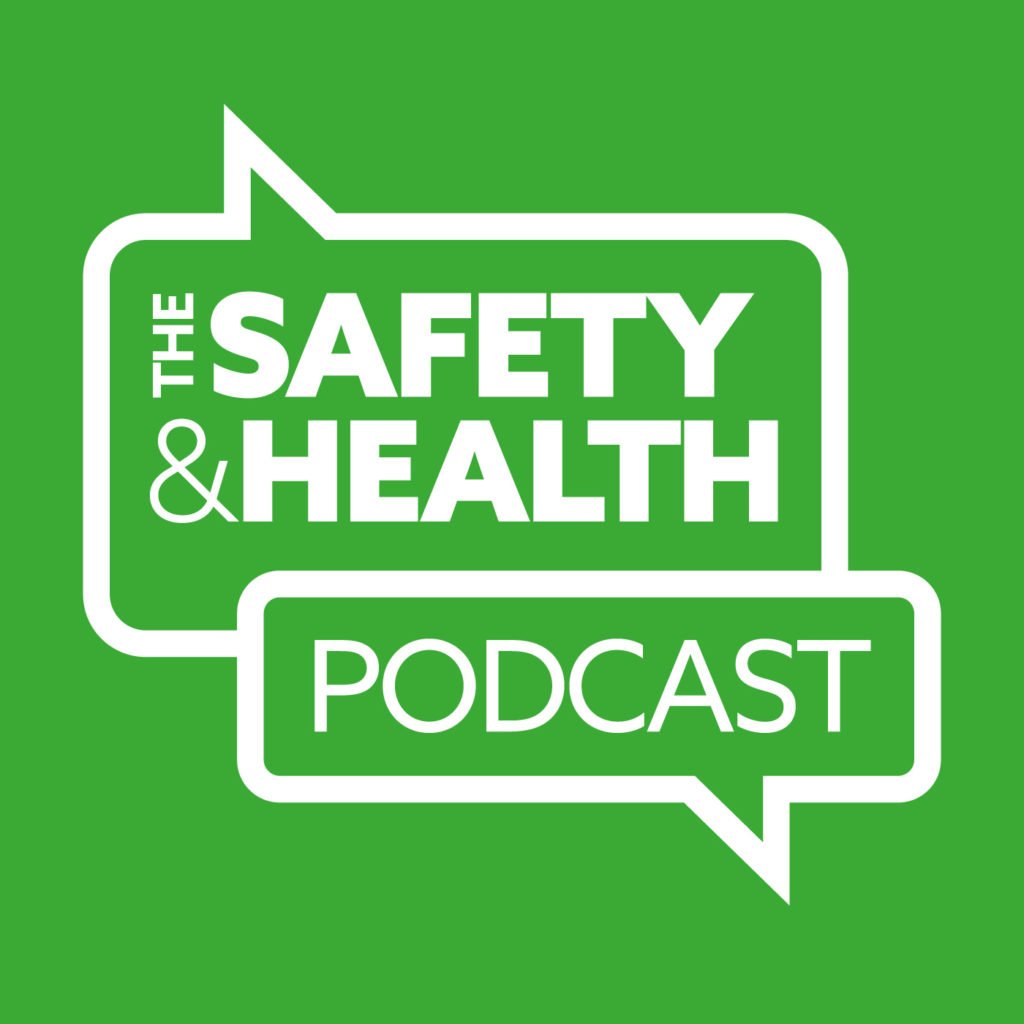
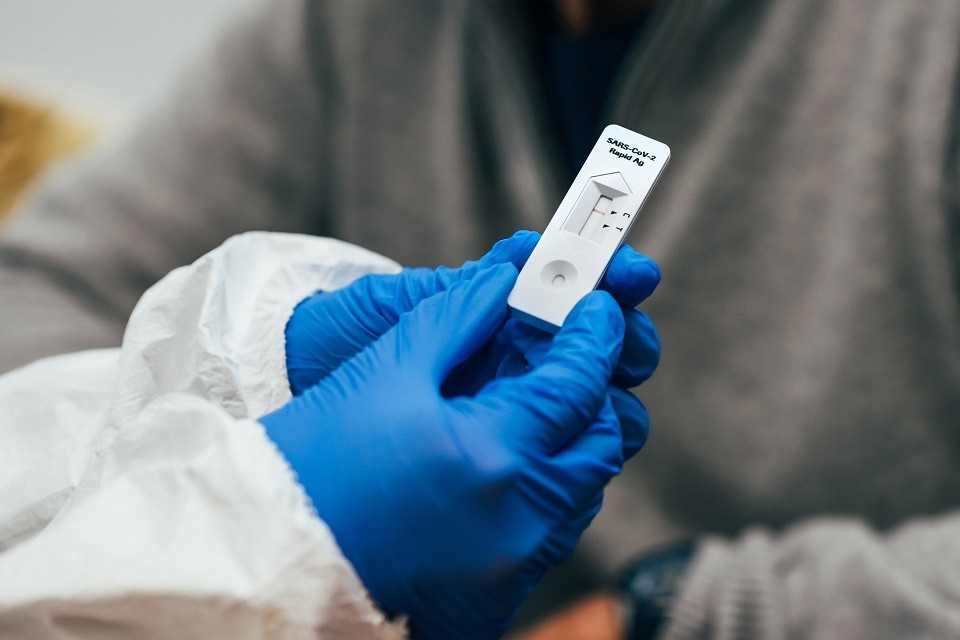

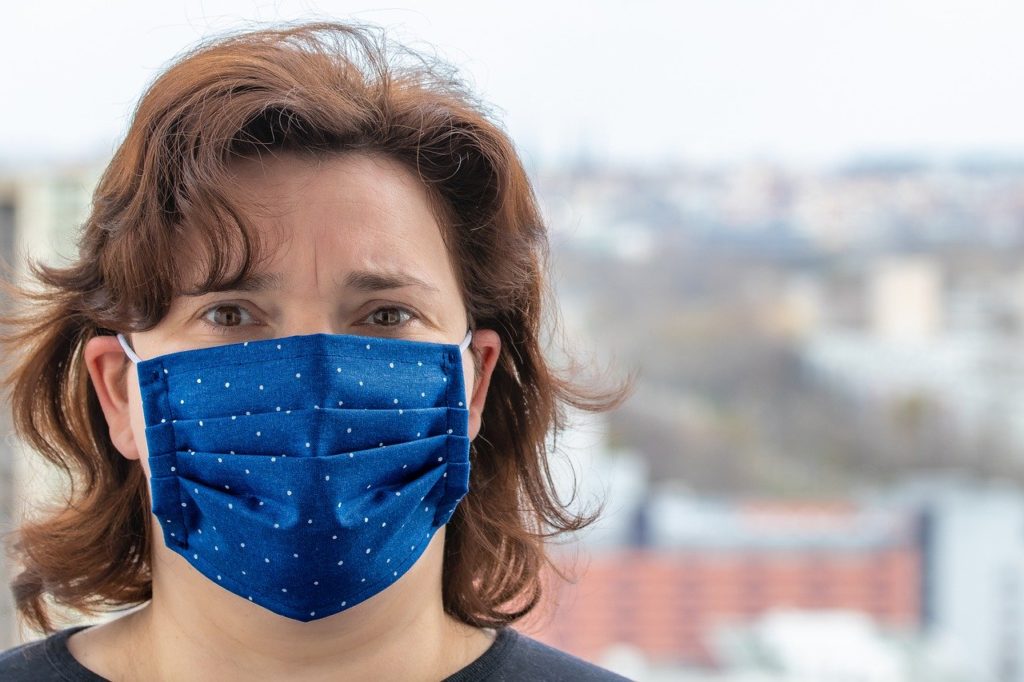






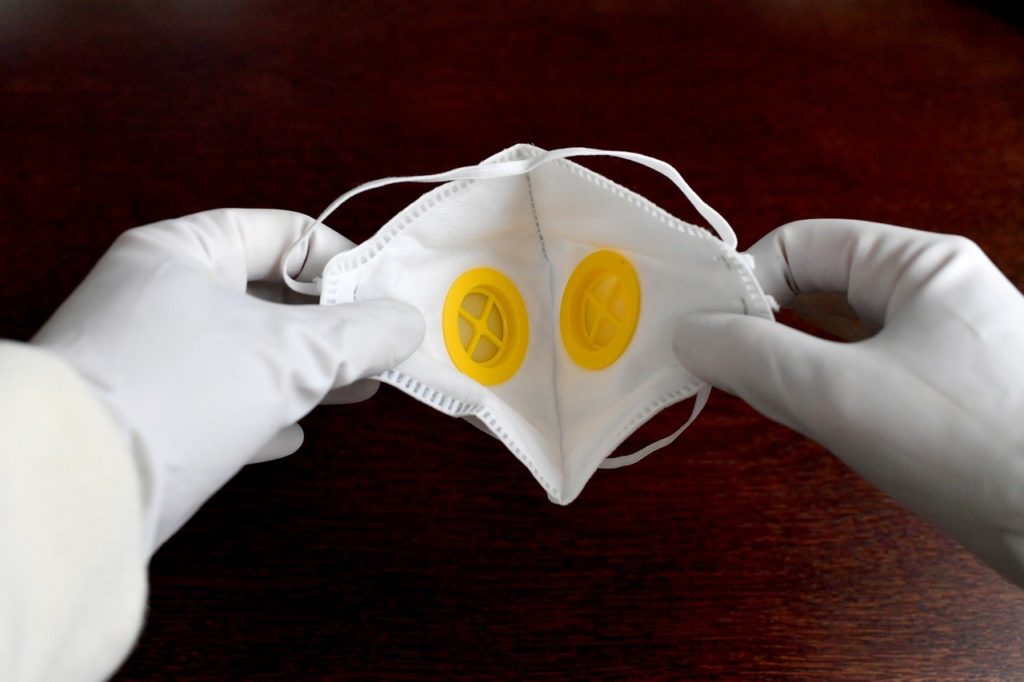






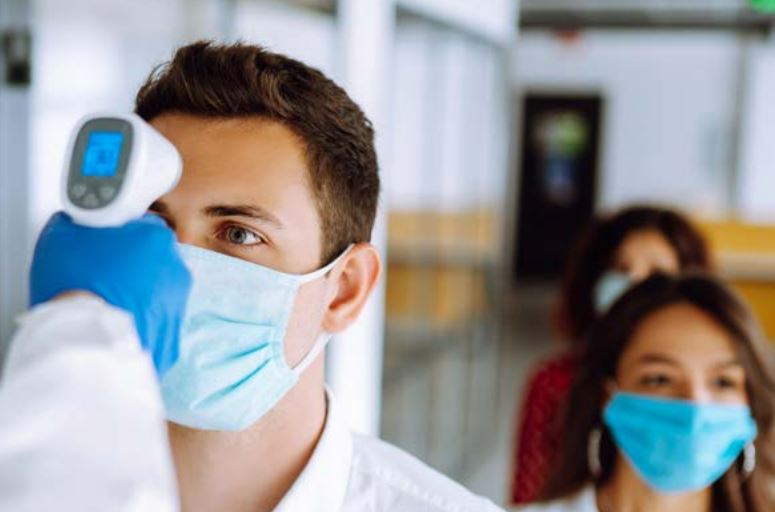
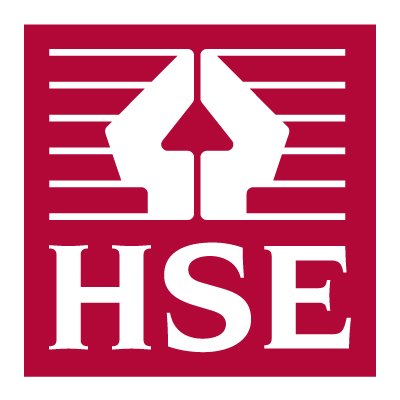







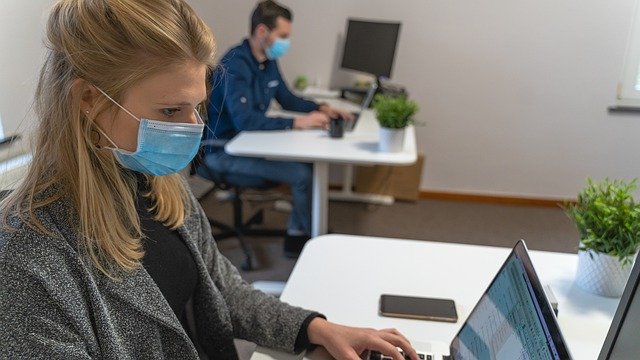
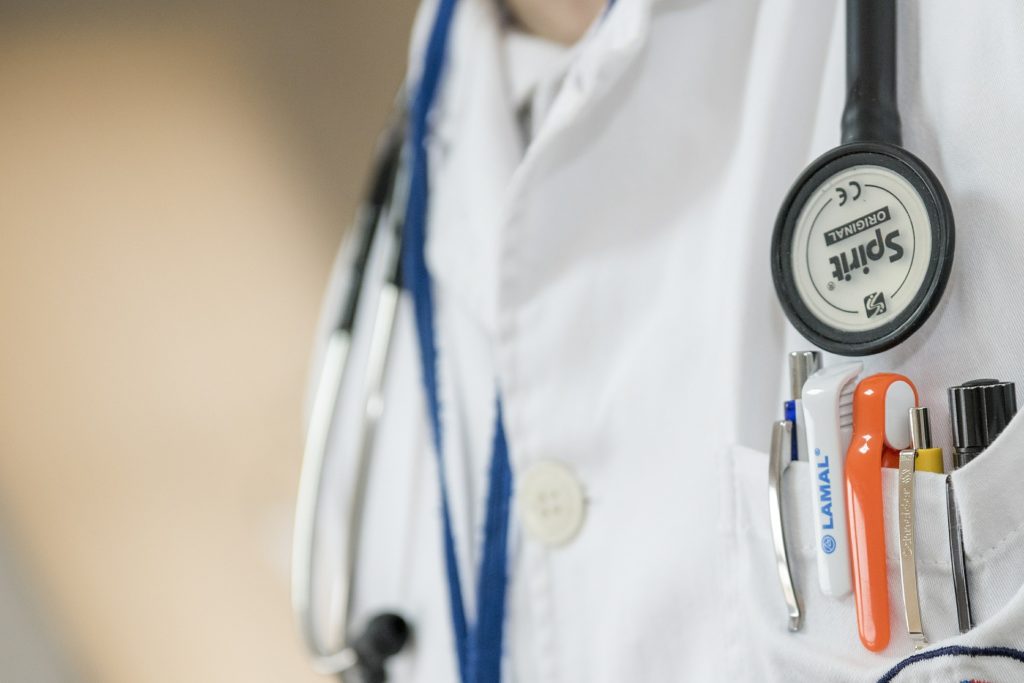
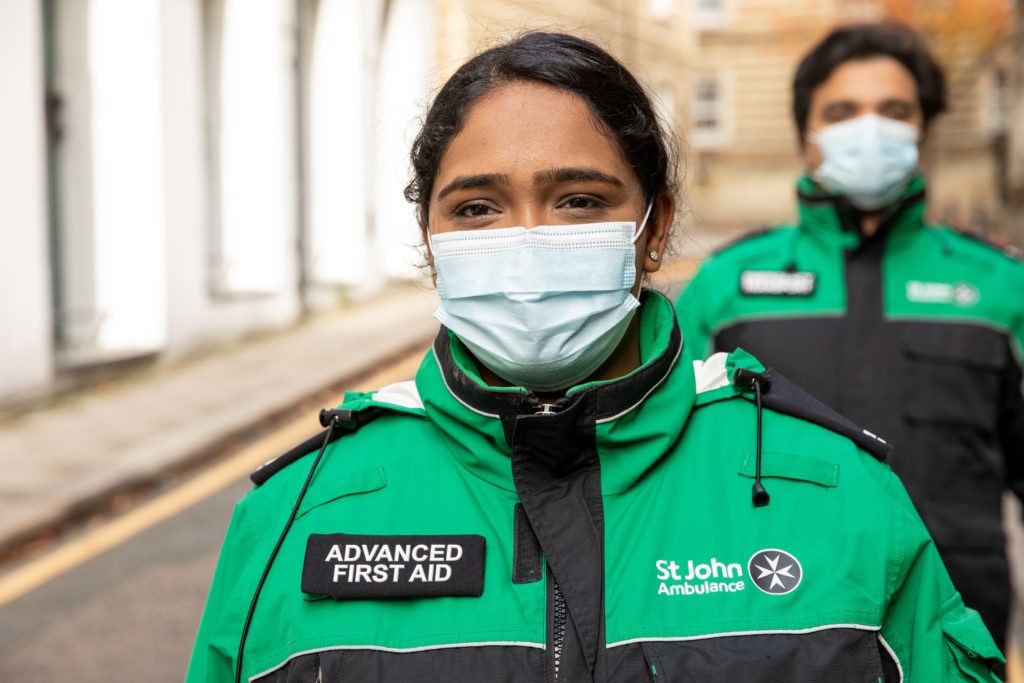

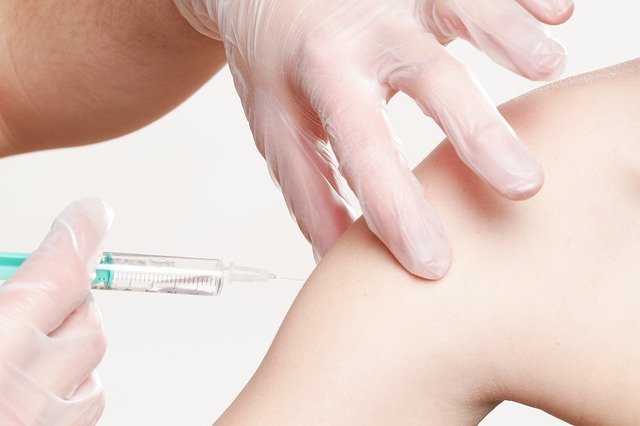
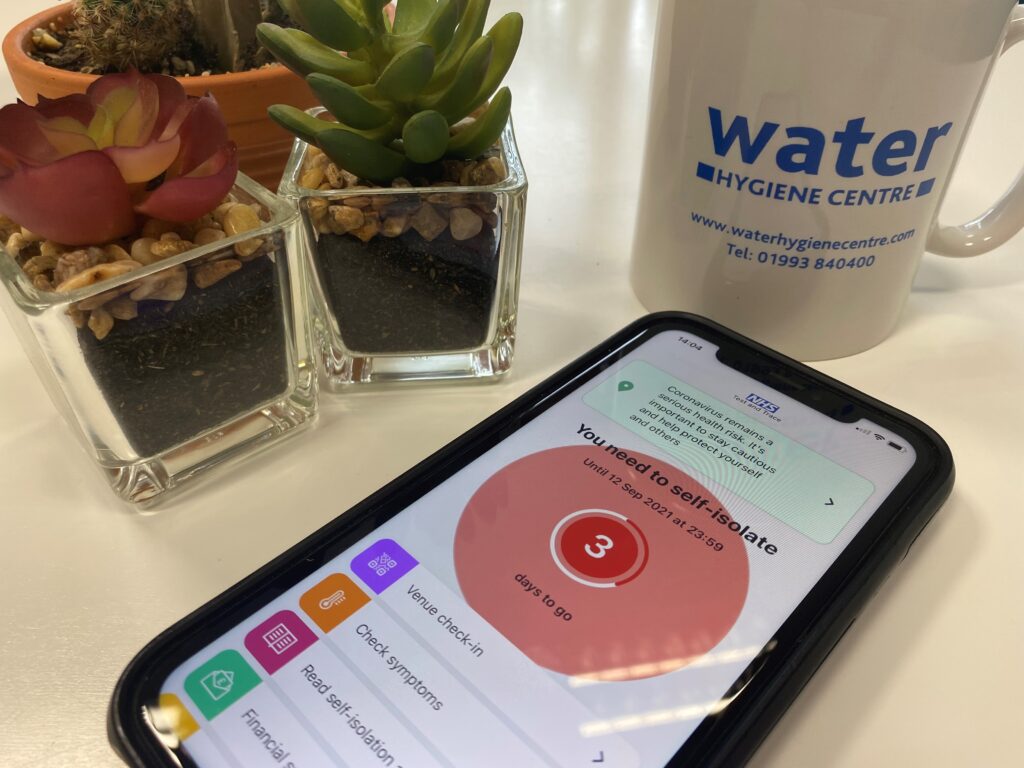






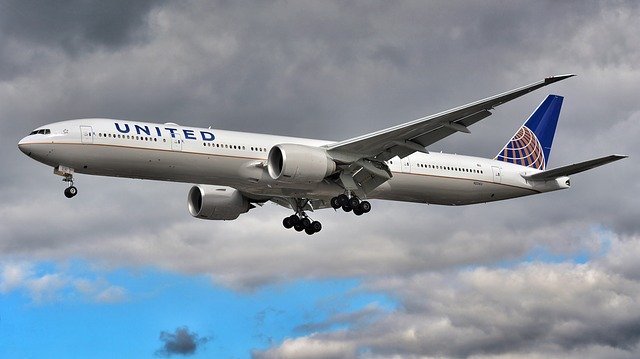
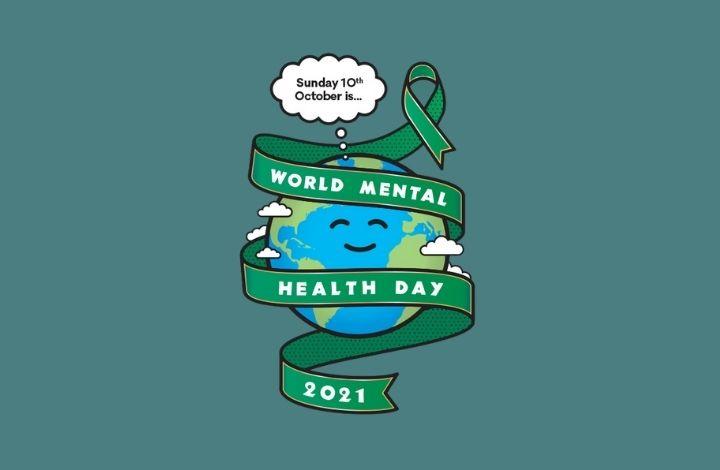




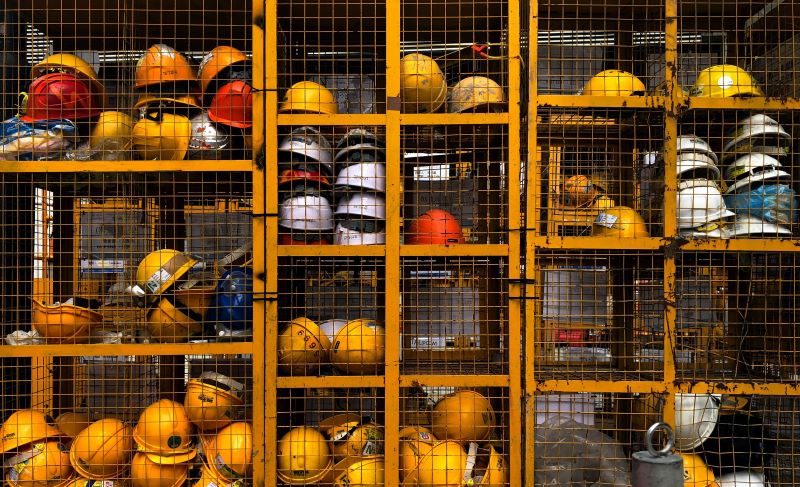


Hi. Just interested on the thoughts on reporting to the HSE if it is confirmed Coronavirus is contracted in the workplace???
Hi Eddie, you can find further information on that here: https://www.shponline.co.uk/legislation-and-guidance/can-employers-be-prosecuted-if-employees-are-exposed-to-covid-19/
is there any advise on whether healthcare professionals with underlying health conditions should avoid possibility of contact with covid patients
Hi Umesh, your best bet for up-to-date information on that, would be to visit one of the NHS links above.
Disease control and prevention is everyone’s responsibility, and keeping yourself in good health and up-to-date on what is going on with the coronavirus is the first step to making sure no one else gets this illness. Even small steps like encouraging employees to remain at home when they’re sick can make a big difference, but the most important step is to always keep in mind that it takes everyone to reduce these risks in the end.
Awesome post, I really appreciate your content.